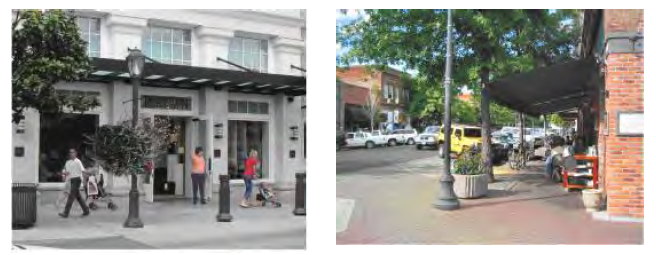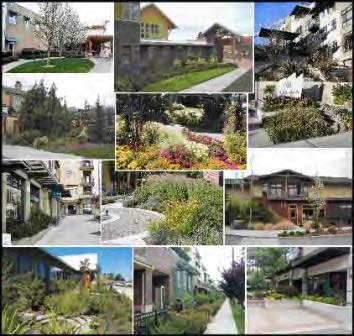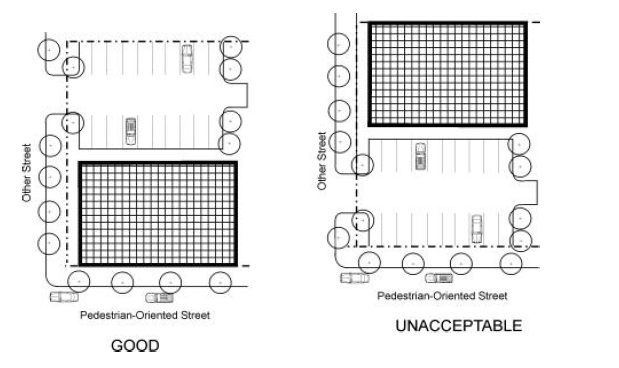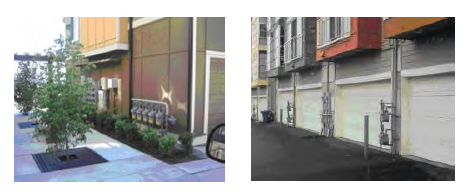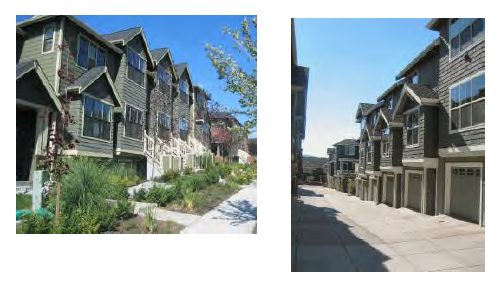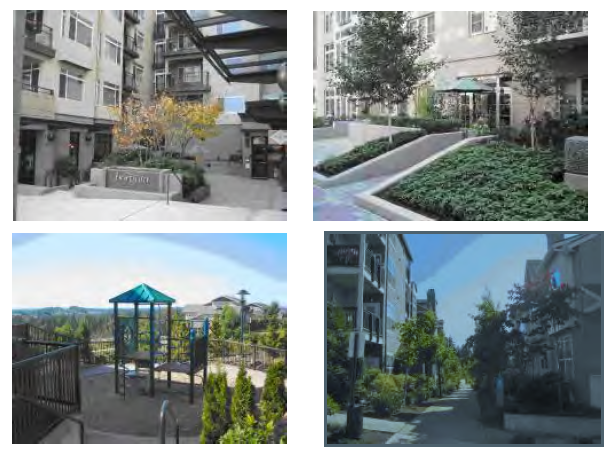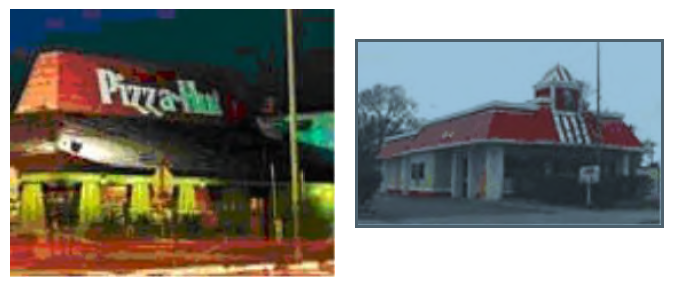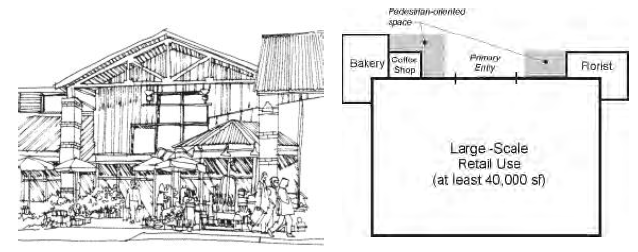Chapter 21.33
COMMERCIAL DESIGN STANDARDS
Sections:
21.33.030 Alternative commercial design standards.
21.33.050 Supplemental design review procedures.
21.33.060 Review by the Planning Commission Design Review Committee.
21.33.110 Site planning – Relationship to street front.
21.33.120 Site planning – Interior yard compatibility.
21.33.130 Site planning – Multiple building/large lot developments and large format retail stores.
21.33.140 Mechanical equipment and service areas.
21.33.150 Design standards for outdoor sales lots.
21.33.160 Design standards for gasoline service stations.
21.33.170 Site planning – Integration of LID and stormwater retention.
21.33.210 General pedestrian access requirements.
21.33.220 Pathways through parking lots.
21.33.230 Sidewalks – Size and materials.
21.33.240 Pedestrian amenities.
21.33.250 Internal pedestrian paths and circulation.
21.33.260 Pedestrian activity and plazas.
21.33.270 Residential open space.
21.33.280 Vehicular access and circulation.
21.33.310 Building design – Character.
21.33.330 Architectural scale.
21.33.380 Northwest woodland character design standards illustrative guide.
21.33.010 Purpose.
(1) The overall purpose of these commercial design standards is to help implement the City’s Comprehensive Plan vision:
Woodinville is a safe, friendly, family-oriented community that supports a successful balance of neighborhoods, parks and recreation, tourism, and business. We have preserved our Northwest woodland character, our open space, and our clean environment. We have enhanced our ability to move freely throughout the community by all modes of travel. Woodinville is a pleasant place in which to live, work, play, and visit, with a compact, inviting downtown that is attractive and functional.
(2) More specifically, the purposes of these commercial design standards are to guide development in a manner that is not only functional, but also aesthetically pleasing, promotes social and economic vitality, and fosters an enhanced sense of safety, comfort, interest and identification between people and their environment. Additionally, the purpose of these commercial design standards is to encourage development that meets the goals and policies of the City of Woodinville Comprehensive Plan for community design. These goals are:
(a) Goal CD-1: To promote an image of a visually cohesive community to residents and visitors.
(b) Goal CD-2: To maintain the Northwest woodland character and heritage of Woodinville.
(c) Goal CD-3: To promote quality design that preserves and enhances the character of Woodinville.
(d) Goal CD-4: To create pedestrian-friendly environments in Woodinville.
(e) Goal CD-5: To encourage the arts as a vital contributor to community design. (Ord. 737 § 2 (Att. A), 2022)
21.33.020 Applicability.
(1) All new construction within the CBD, O, TB, GB, and NB zones shall be subject to the design standards in this chapter.
(2) Alteration of any structure that affects its exterior appearance shall be subject to design review under this chapter.
(3) The City has established two thresholds to gauge the extent the requirements of this chapter shall be applied based on what is practical and reasonable for that level of improvement.
(a) If 50 percent or more of a building or structure subject to design review is altered within a period of three years, the structure shall be subject to the applicable requirements that do not involve repositioning the building or reconfiguring site development as determined by the Director.
(b) If less than 50 percent of a building or structure subject to design review is altered within a period of three years, the requirement is only that the proposed improvements meet the standards and/or guidelines and do not lead to further nonconformance with the standards and guidelines. For example, if a property owner decides to replace a building facade’s siding, then the siding shall meet the applicable exterior building material and color standards and/or guidelines, but elements such as building modulation would not be required.
(4) Where the design standards reference specific design districts, see Chapter 21.22 WMC for a description and the boundaries of these design districts. (Ord. 737 § 2 (Att. A), 2022)
21.33.030 Alternative commercial design standards.
The City Council may authorize the Director to approve departures from the standards set forth in this chapter where such departures are not explicitly prescribed by this chapter, provided:
(1) The departures are consistent with and substantially implement the objectives, concepts and guidelines set forth in the “Downtown Vision and Illustrative Guide: June 2018” approved by the City Council pursuant to Resolution No. 524; and
(2) A development agreement is obtained pursuant to Chapter 21.85 WMC and substantial compliance with the “Downtown Vision and Illustrative Guide” is included in the terms of the development agreement; and
(3) The applicant submits with their application for design review specific identification of proposed departures from those commercial design standards set forth in this chapter in favor of specific identified provisions of the “Downtown Vision and Illustrative Guide: June 2018.” (Ord. 737 § 2 (Att. A), 2022)
21.33.040 Interpretation.
(1) When there is a conflict between these design standards and other City plans, policies, and regulations, the most specific standard, guideline, or regulation shall apply, as determined by the Director. For example, this title provides for a minimum street setback of 10 feet in commercial districts, whereas the design standards allow buildings to be placed on the front property line as long as they meet certain design requirements. While the design standards herein are less restrictive in this case, they are more specific in that they allow for zero setbacks if certain conditions are met. (Therefore, the Director will determine that they apply.)
(2) Each section of the design standards contains a list of “intent” statements followed by “design principles” and subsequent implementing measures. Specifically:
(a) Intent statements are overarching objectives. For example, the intent statement for the “building corners” section is to “create visual interest and increased activity at street corners.” Project applicants must be able to demonstrate how their project meets the intent, to the Director’s satisfaction.
(b) Design principle statements describe broad actions that are necessary to achieve the intent.
(c) A collection of standards implements the design principles. Specifically:
(i) Standards that use words such as “shall,” “must,” “is/are required,” or “is/are prohibited” signify required actions.
(ii) Some standards take a “toolbox” approach, in that a development may be required to include at least two design elements from a large list of options.
(iii) Standards using words such as “should” or “is/are recommended” signify recommended actions that are meant to be applied with some flexibility. Development projects must comply with such measures unless the development proposal meets the intent in some other manner, as determined by the Director.
(d) Furthermore, the document contains some specific standards that are easily quantifiable, while others provide a level of discretion in how they are complied with. In the latter case, the applicant must demonstrate to the Director, in writing, how the project meets the intent of the standard. (Ord. 737 § 2 (Att. A), 2022)
21.33.050 Supplemental design review procedures.
The following procedures shall be applied in combination with the procedures set forth in Chapters 21.80 through 21.84 WMC.
(1) When an applicant submits a development application that triggers design review, the design review shall be combined with review of the applicable project permit application consistent with WMC 21.80.040, unless the applicant requests a standalone design review process.
(2) No project approval shall be granted, no building permit issued, and no construction shall begin until the design review decision becomes final pursuant to WMC 21.80.190.
(3) With submittal of the building permit application, the Director shall determine that the final design is consistent with the issued design decision. (Ord. 737 § 2 (Att. A), 2022)
21.33.060 Review by the Planning Commission Design Review Committee.
(1) The Planning Commission Design Review Committee shall review and make a recommendation to the Director on all proposed design reviews involving a request for a Director-authorized departure from the design standards.
(2) The review and recommendation of the Design Review Committee shall be based on whether the proposal is consistent with the intent statements applicable to the design standard for which the departure is requested. (Ord. 737 § 2 (Att. A), 2022)
21.33.110 Site planning – Relationship to street front.
(1) Intent. People experience the City from streets. Streets are some of the vital spaces that bind the community together and allow for various modes of movement within the City. The intent for street fronts is:
(a) To create an active, safe pedestrian environment;
(b) To enhance commercial areas and to establish visual identity for each area;
(c) To reflect a small village tradition in structures;
(d) To unify streetscapes;
(e) To improve circulation, including options for pedestrians, bicycles, and vehicles;
(f) To enhance the visual character of streets within commercial areas;
(g) To encourage garden-type landscaping elements as a unifying feature; and
(h) To enhance the visibility of commercial uses from the street.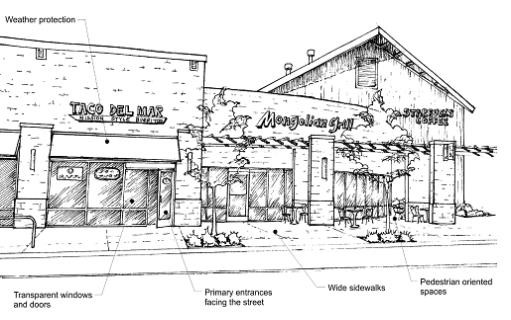
Figure 1. An example of development that meets frontage requirements for pedestrian-oriented streets.
(2) Pedestrian-Oriented Street Design Principle. Relate development to designated pedestrian-oriented street frontages. All development for properties fronting on a designated “pedestrian-oriented street,” as defined in WMC 21.11A.170, shall include the following features: site planning measures to define the street edge; encourage pedestrian access amenities; and support the commercial area’s design purpose stated in WMC 21.33.010.
Streets within the Downtown and Little Bear Creek Corridor study area shall comply with the provisions of subsection (4) of this section. The following streets are designated as pedestrian-oriented streets:
• NE 175th Street;
• 135th Avenue NE;
• 133rd Avenue NE;
• 138th Avenue NE;
• 140th Avenue NE.
Developments on pedestrian-oriented streets must adhere to the following standards, unless the Director determines that they prevent viable site development:
(a) Buildings shall orient to the street in one of the following ways:
(i) The building shall abut the sidewalk (including any setback required to achieve a wider sidewalk) and shall include a pedestrian-oriented facade; or
(ii) The building shall be set back from the sidewalk edge a minimum of five feet with either pedestrian-oriented space as described in WMC 21.33.260, or garden area landscaping as described in subsection (2)(c) of this section between the sidewalk edge and the building front.
(b) Pedestrian-oriented facades shall include:
(i) Transparent window areas or window displays along at least 75 percent of the ground-floor facade. The window area must cover the area between two feet and eight feet above the sidewalk or walkway surface; and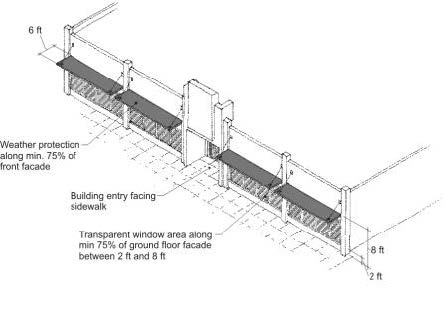
Figure 2. An example of a pedestrian-oriented facade.
(ii) Weather protection at least six feet wide along at least 75 percent of the building’s front face. Wider weather protection features are encouraged to provide for outdoor seating areas such as in Figure 3. The weather protection may be in the form of awnings, marquees, canopies, or building overhangs (see Figure 3). Gaps in the covering allow for visual variety in the facade through the use of architectural features and/or landscaping components.
Figure 3. Examples of weather protection features. Weather protection features that are eight feet or wider, shown at right, can protect outdoor seating areas.
(c) Garden Area Landscaping Standards. The garden landscaping shall incorporate landscaping that adds seasonal color and interest and does not act as a visual barrier. Such areas should incorporate a variety of plant types that feature a range of colors and textures that provide visual interest from the sidewalk. Grass is acceptable only if combined with other plantings that provide seasonal interest and meet the intent of this section. English ivy and other nonnative, invasive plants are prohibited in this space. Plant types should be appropriate to the Pacific Northwest climate. Native and drought tolerant plants are preferred. The garden area shall be designed and maintained to provide clear visibility between storefront windows and the street.
(d) The front facade of buildings separated from the sidewalk edge by at least five feet of pedestrian-oriented space or garden area landscaping shall adhere to the standards for pedestrian-oriented facades (according to subsection (2)(b) of this section) or adhere to the following standards:
(i) The building must include transparency along at least 50 percent of the ground-floor facade between four and eight feet above the sidewalk. For buildings with ground-floor residential units, the Director may reduce the transparency requirement, provided the design treatment meets the intent of the standards.
(ii) Weather protection at least six feet deep is required over the entry. Such elements can project into front setback areas.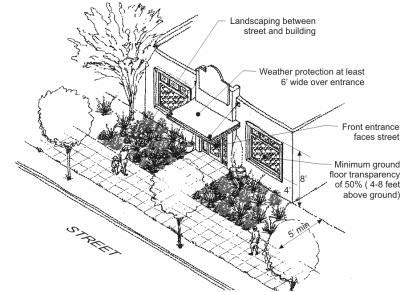
Figure 4. An example of incorporating a small garden area between the sidewalk and the building.
Figure 5. A variety of “garden” type landscaping configurations and designs that would be appropriate for areas between the sidewalk and a building on a pedestrian-oriented street.
(e) Building entries must have direct access to the public sidewalk. Such entries should face the street to the extent possible. Where entries are located on the side of the building, they must be visible from the street and connected by a pedestrian pathway. See Figures 2 and 3 for examples.
(f) Parking shall be located behind structures, away from pedestrian-oriented streets. On sites that front on two or more pedestrian-oriented streets and where the Director determines that there are no reasonable alternatives, parking and vehicle access areas may occupy no more than 50 percent or 65 feet of the street frontage, whichever is less. The Director will determine on which street frontage the parking may be allowed consistent with the intent statements in subsection (1) of this section. Parking lots may not be located at a corner that faces on a pedestrian-oriented street.
Figure 6. Parking location and configuration options.
(g) If allowed, parking lots next to pedestrian-oriented streets shall be screened from the sidewalk by one of the following methods:
(i) Provide a minimum five-foot-wide planting bed that incorporates a continuous three-foot-tall wall. The planting bed shall be in front (street side) of the wall and feature Type 3 landscaping in accordance with WMC 21.36.060. Alternative landscaping schemes will be considered by the Director, provided they meet the intent of the guidelines. The wall shall be constructed of brick, stone, decorative concrete or concrete block, or other permanent material that provides visual interest and helps to define the street edge, as determined by the Director. See Figure 7 for an example.
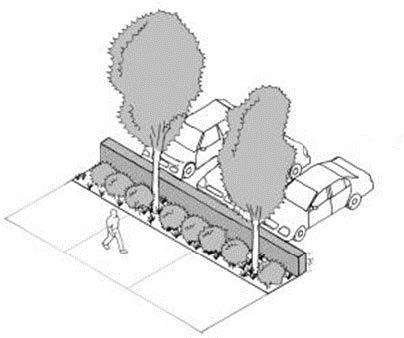
Figure 7. Parking lot planting buffer with low wall.
(ii) Provide an elevated planter that is a minimum of five feet wide and between two and three feet in height. Ledges that are approximately 12 inches in width are encouraged, as they can double as a seating area. The planter must be constructed of masonry, concrete or other permanent material that effectively contrasts with the color of the sidewalk and combines groundcover and annuals, perennials, ornamental grasses, low shrubs, and/or small trees that provide seasonal interest and winter greenery, as determined by the Director. See Figure 8 as an example.
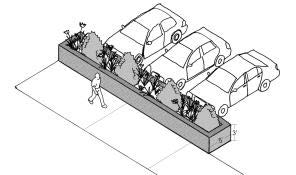
Figure 8. Elevated parking lot planting buffer.
Both options in subsections (2)(g)(i) and (ii) of this section feature plantings to maintain eye level visibility between the street/sidewalk and parking area for safety. This means that shrubs and other low plantings should be maintained below three feet in height, while trees (once they achieve taller heights) should generally be trimmed up to the eight-foot level. See Figure 9. The planting beds in both options shall be irrigated unless the Director determines it is not necessary for the plant materials selected.
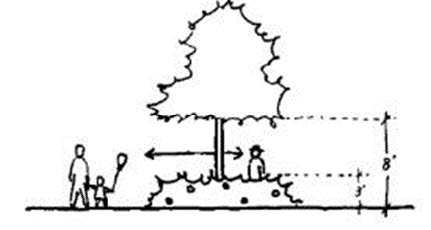
Figure 9. Parking lot planting buffers shall emphasize the 3:8 rule for visibility and safety.
(h) Parking structures located adjoining to pedestrian-oriented streets and other streets noted in subsection (4) of this section shall be designed with ground level commercial space fronting on the street consistent with standards herein. Such commercial space shall be at least 30 feet deep. Vehicular entrances and other ground-floor openings of the parking garage are allowed only if the Director determines no other configuration is feasible. Openings and entries for structured parking shall not count as transparent window area for the purpose of determining transparency requirements set forth herein.
(i) If insufficient right-of-way exists to allow for 12 feet of public sidewalk, set the building back sufficiently to provide at least 12 feet of walking surface according to WMC 21.33.230(2)(a), Sidewalks, Size and Materials. (For Downtown and Little Bear Creek Corridor, see subsection (4) of this section for sidewalk dimensions and requirements.)
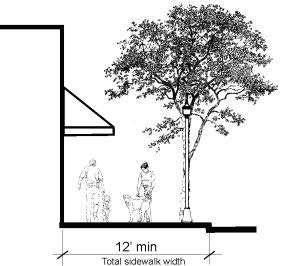
Figure 10. Where insufficient right-of-way exists, set buildings back sufficiently to meet minimum sidewalk width standards.
(j) No large item display areas are permitted (e.g., auto sales) in the front yard area. Sidewalks shall not be enclosed as building space for retailing. Small, temporary displays for items such as groceries, hardware, nursery stock, books, etc., may be allowed, provided the display does not unduly impede pedestrian sidewalk traffic. Large items, such as potting soil and compost bags, are not allowed.
(k) The Director may permit departures from the specific standards if he/she determines that public benefit can be achieved in terms of the intent described above. The applicant must demonstrate that there is a compelling reason to depart from specific standards and that the departure will result in increased pedestrian activity and visual interest along the street.
(3) Non-Pedestrian-Oriented Street Design Principle. Relate development to street fronts for streets that are not designated as pedestrian-oriented streets. These standards do not apply to streets in the Downtown and Little Bear Creek Corridor (see subarea in Chapter 21.22 WMC). See subsection (4) of this section for the Downtown and Little Bear Creek Corridor.
All development on streets not designated as pedestrian-oriented streets shall include site planning measures to create an attractive street edge, accommodate pedestrian access, and support the applicable design objectives stated in the Comprehensive Plan. Developments must adhere to the following standards unless the Director determines that they prevent viable site development.
(a) Developments must provide the following amenities near the sidewalk:
(i) Physically define the street edge with building(s), landscaping, or other features as approved by the Director;
(ii) Parking lots adjacent to sidewalks shall provide one of the options in subsection (2)(g) of this section or a 10-foot-wide landscape screening buffer consisting of Type 3 landscaping in accordance with WMC 21.36.060;
(iii) Provide sufficient room for a sidewalk at least eight feet wide if there is not space in the public right-of-way; and
(iv) Provide direct access to building fronts from the sidewalk. Preferably, these areas should be separate from the parking lot. If access traverses the parking lot, then it should be raised and/or specially marked.
(b) Buildings are encouraged to be located adjoining to the sidewalk. Such buildings must feature a pedestrian-oriented facade and weather protection at least four feet, six inches wide along at least 75 percent of the building’s front face. The weather protection may be in the form of awnings, marquees, canopies, or building overhangs (see Figures 2 and 3).
(c) Developments should use the architectural elements of a building and landscaping to highlight and define the entrance, particularly where the entrance is set back off the street.
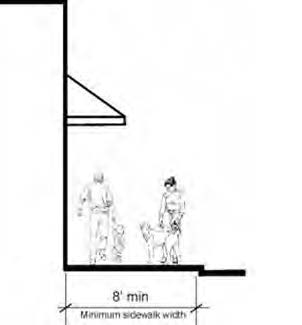
Figure 11. Provide sufficient room for a sidewalk at least eight feet wide on streets that are not designated as pedestrian-oriented streets.
(4) Downtown and Little Bear Creek Corridor Site Planning – Relationship to Street Front.
(a) Street Orientation Requirements Matrix. Development in the Downtown and Little Bear Creek Corridor (see subarea in Chapter 21.22 WMC) shall adhere to the standards in Table 21.33.110(1). If there is a conflict with other provisions of these standards, the Director shall determine the governing provision.
|
Street |
Building Orientation2 |
Driveway Access |
Adjoining Parking Lots |
Adjoining Parking Garage |
|---|---|---|---|---|
|
NE 175th Street |
Adhere to pedestrian-oriented street standards per WMC 21.33.110(2), except garden area landscaping in the front yard is not an option. |
New driveways are not allowed unless there is no other feasible option, as determined by the Director. |
Not allowed. |
Not allowed on ground floor facing street. Adhere to WMC 21.33.110(2)(h). |
|
135th Ave NE |
Adhere to pedestrian-oriented street standards per WMC 21.33.110(2). This emphasizes: Building located next to (abutting) the side-walk with a pedestrian-oriented facade or separated from the sidewalk with a minimum of 5 feet of pedestrian-oriented space or garden area landscaping. |
New driveways not allowed, unless there is no other feasible option, as determined by the Director. |
Not allowed unless site abuts two pedestrian-oriented streets and there is no other feasible option. Adhere to pedestrian-oriented street standards per WMC 21.33.110(2)(f). If parking is allowed to locate next to (abutting) the street, land-scape screening shall be provided in accordance with WMC 21.33.110(4)(b). |
Not allowed on ground floor facing street. Adhere to WMC 21.33.110(2)(h). |
|
138th Avenue NE/Garden Way NE |
If the building is located next to (abutting) the sidewalk, a pedestrian-oriented facade as specified in WMC 21.33.110(2)(b) shall be required. If building is located within 20 feet of the sidewalk, the area between the building and the sidewalk shall be pedestrian-oriented space or garden area landscaping in accordance with WMC 21.33.110(2)(c) and the facade and entrance shall be in accordance with WMC 21.33.110(2)(d) and (e). If the building is more than 20 feet from the sidewalk, Type 2 or 3 landscape screening shall be provided. |
Parking lot entrances, driveways and other vehicle access routes restricted to no more than one entrance lane and one exit lane per 300 linear feet of property; see WMC 21.33.300. |
Allowed with required landscape screening.1 Adhere to WMC 21.33.110(4)(b) for parking lot screening methods. |
Must be set back at least 20 feet and screened with Type 1 landscaping.1 |
|
NE 173rd Street |
If the building abuts the sidewalk, a pedestrian-oriented facade as specified in WMC 21.33.110(2)(b) shall be required. If building is located within 20 feet of the sidewalk, the area between the building and the sidewalk shall be pedestrian-oriented space or garden area landscaping in accordance with WMC 21.33.110(2)(c) and the facade and entrance shall be in accordance with WMC 21.33.110(2)(d) and (e). If the building is more than 20 feet from the sidewalk, Type 2 or 3 landscape screening shall be provided. |
Adhere to the vehicle access requirements in WMC 21.33.300. |
Adhere to parking lot requirements in WMC 21.33.110(3)(a) and (4)(b), and all requirements for parking lots adjoining nonpedestrian-oriented streets. |
Allowed with landscape screening conforming to WMC 21.33.110(4)(c). |
|
133rd Ave NE |
Adhere to pedestrian-oriented street standards per WMC 21.33.110(2). This emphasizes: Buildings located next to (abutting) the side-walk with a pedestrian-oriented facade or separated from the sidewalk with at least 5 feet of pedestrian-oriented space or garden area landscaping. |
Allowed, but Director may determine location and special conditions to ensure safety and streetscape quality; see WMC 21.33.300. |
Adhere to pedestrian-oriented street standards per WMC 21.33.110(2)(f). If parking is allowed to locate next to (abutting) the street, landscape screening shall be provided in accordance with WMC 21.33.110(4)(b). |
Allowed with landscape screening conforming to WMC 21.33.110(4)(c). |
|
NE 171st Street |
If the building is located next to (abutting) the sidewalk, a pedestrian-oriented facade, as specified in WMC 21.33.110(2)(b), shall be required. If the building is located within 20 feet of the sidewalk, the area between the building and the sidewalk shall be pedestrian-oriented space or garden area landscaping in accordance with WMC 21.33.110(2)(c) and the facade and entrance shall be in accordance with WMC 21.33.110(2)(d) and (e). When buildings are separated from NE 171st St. by Woodin Creek, alternate landscaping may be permitted by the Director. If the building is more than 20 feet from the sidewalk, Type 2 or 3 landscape screening shall be provided. |
Restricted. Not permitted unless the Director determines there are no feasible alternatives; see WMC 21.33.300. |
Parking lots facing Woodin Creek are allowed with land-scape screening in accordance with WMC 21.33.110(4)(b)(iv). Otherwise, development shall adhere to parking lot location and screening standards set forth in WMC 21.33.110(4)(b)(iii). |
Allowed with landscape screening conforming to WMC 21.33.110(4)(c). |
|
Little Bear Creek Park-way |
If the building is located next to (abutting) the sidewalk, a pedestrian-oriented facade, as specified in WMC 21.33.110(2)(b), shall be required. If the building is located within 20 feet of the sidewalk, the area between the building and the sidewalk shall be pedestrian-oriented space or garden area landscaping in accordance with WMC 21.33.110(2)(c) and the facade and entrance shall be in accordance with WMC 21.33.110(2)(d) and (e). If the building is more than 20 feet from the sidewalk, Type 2 or 3 landscape screening shall be provided. |
Joint driveways serving more than one property where possible. Adhere to WMC 21.33.300. No more than one entry and exit per 300 LF of street property are allowed. |
Parking lots facing the street are allowed with landscape screening, as specified in WMC 21.33.110(4)(b)(iii). |
Allowed with landscape screening conforming to WMC 21.33.110(4)(c). |
|
Woodinville-Duvall Road |
If the building is located next to (abutting) the sidewalk, a pedestrian-oriented facade, as specified in WMC 21.33.110(2)(b), shall be required. If the building is located within 20 feet of the sidewalk, the area between the building and the sidewalk shall be pedestrian-oriented space or garden area landscaping in accordance with WMC 21.33.110(2)(c) and the facade and en-trance shall be in accordance with WMC 21.33.110(2)(d) and (e). If the building is more than 20 feet from the sidewalk, Type 2 or 3 landscape screening shall be provided. |
Joint driveways where possible to reduce accidents. Adhere to WMC 21.33.300. |
Parking lots facing street allowed with landscape screening, as specified in WMC 21.33.110(4)(b)(iii). |
Allowed with landscape screening, as specified in WMC 21.33.110(4)(c). |
|
NE 178th Street |
If the building is located next to (abutting) the sidewalk, a pedestrian-oriented facade, as specified in WMC 21.33.110(2)(b), shall be required. If the building is within 20 feet of the sidewalk, pedestrian-oriented space or garden area landscaping shall be provided in accordance with WMC 21.33.110(2)(c) and the facade and entrance shall be in accordance with WMC 21.33.110(2)(d) and (e). If the building is more than 20 feet from the sidewalk, Type 2 or 3 landscape screening shall be provided. |
Joint driveways where possible to reduce accidents.1 Adhere to WMC 21.33.300. |
Parking lots facing street allowed with 10 feet of Type 3 landscape screening.1 |
Allowed with landscape screening conforming to WMC 21.33.110(4)(c).1 |
|
140th Ave NE |
If the building is located next to (abutting) the sidewalk, a pedestrian-oriented facade, as specified in WMC 21.33.110(2)(b), shall be required. If the building is within 20 feet of the sidewalk, pedestrian-oriented space or garden area landscaping shall be provided in accordance with WMC 21.33.110(2)(c) and the facade and entrance shall be in accordance with WMC 21.33.110(2)(d) and (e). If the building is more than 20 feet from the sidewalk, Type 2 or 3 landscape screening shall be provided. |
Driveways restricted where possible. Adhere to WMC 21.33.300. |
Parking lots proposed to be located next to (abutting) a street allowed only if no other configuration is possible. If allowed, parking is limited to 50% of street frontage and 10 feet of Type 3 landscape screening is required. |
Allowed with land-scape screening per WMC 21.33.110(4)(c) only if no other configuration is possible. |
|
Woodinville-Snohomish Road |
If the building is located next to (abutting) the sidewalk, a pedestrian-oriented facade, as specified in WMC 21.33.110(2)(b), shall be required. If the building is within 20 feet of the sidewalk, pedestrian-oriented space or garden area landscaping shall be provided in accordance with WMC 21.33.110(2)(c) and the facade and entrance shall be in accordance with WMC 21.33.110(2)(d) and (e). If the building is more than 20 feet from the sidewalk, Type 2 or 3 landscape screening shall be provided. |
Joint driveways where possible to reduce accidents; see WMC 21.33.300. |
Parking lots facing street allowed with 10 feet of Type 3 landscape screening. |
Allowed with landscape screening conforming to WMC 21.33.110(4)(c). |
|
Notes: 1. Implemented only when new development occurs on 138th Avenue NE and NE 178th Street. 2. Setbacks may be required to accomodate new streetscape and sidewalk standards, according to public works standards and the street configuration chart (Table 2 of this chapter). |
||||
(b) Parking Lot Screening Along Streetscapes in the Downtown and Little Bear Creek Corridor (see Chapter 21.22 WMC).
(i) If allowed, parking lots abutting streets in the Downtown and Little Bear Creek Corridor shall be screened from the sidewalk according to the standards in subsection (2)(g) of this section, unless otherwise noted in subsections (4)(b)(i) through (vi) of this section.
(ii) Parking lots abutting 138th Ave NE/Garden Way NE shall be screened from the sidewalk with a 20-foot-wide landscaped screening buffer. This can consist of either:
(A) A berm raised at crown at least two feet above sidewalk grade. The landscaping shall consist of Type 3 landscaping in accordance with WMC 21.36.060. Fifty percent of the required shrubs and groundcover shall exhibit decorative flowers or foliage;
(B) An alternative design, as approved by the Director, that meets the following intent:
(1) Continuous screen three feet high;
(2) Attractive streetscape with a variety of decorative planting;
(3) Attractive stormwater features such as a rain garden or biofiltration swale;
(iii) Parking lots abutting Little Bear Creek Parkway NE, NE 171st Street, and NE Woodinville-Duvall Road shall be screened with a 15-foot-wide area of Type 2 landscaping in accordance with WMC 21.36.060;
(iv) Parking lots, parking garages, vehicle circulation, and service areas abutting Woodin Creek, or its critical areas buffer, must be screened from the creek corridor with at least a 10-foot-wide area of Type 1 landscaping in accordance with WMC 21.36.060. Buildings with storefronts or residential units directly facing Woodin Creek or its critical areas buffer do not require screening;
(v) Parking lots abutting streets not noted in subsections (4)(b)(i) through (iv) of this section and in the Downtown and Little Bear Creek Corridor, where allowed, shall provide one of the options described in subsection (2)(g) of this section or a 10-foot-wide landscape screening buffer consisting of Type 3 landscaping in accordance with WMC 21.36.060;
(vi) Alternate Street Front Landscaping Requirements. The Director may allow alternate landscape screening standards if he/she finds that the intent of the guidelines is met.
(c) The ground floor of any parking garage facing a sidewalk in the Downtown and Little Bear Creek Corridor, where allowed, shall be fully screened with 10-foot-wide area of Type 1 landscaping in accordance with WMC 21.36.060.
(d) Setbacks for Street Improvements. The Director may require that buildings and other site improvements be set back from the street right-of-way to allow for street improvements such as sidewalks, bike lanes and parking lanes. Table 21.33.110(2) indicates the City’s general intent for street configuration on each street. It is included only as an informational guide. Actual street configuration may vary as design progresses or with specific locations.
|
Street |
No. of Lanes |
Sidewalk Width |
Bike Lane |
On-Street Parking |
Median |
|---|---|---|---|---|---|
|
NE 175th Street |
1 each way with left-turn lanes at 135th, 133rd, and Garden Way NE |
12-foot-wide (minimum) with trees and amenities |
Yes |
None |
Yes, where feasible (west of 133rd Ave NE) |
|
135th Ave NE |
1 each way |
12-foot-wide (minimum) with street trees that do not obstruct view |
Yes; connects 21 Acres to Little Bear Creek and transit |
Yes |
No |
|
138th Avenue NE/Garden Way NE |
3 lanes 72-foot-wide ROW |
6-foot-wide sidewalk and 10-foot-wide planting area |
Yes |
Yes |
Yes, where feasible |
|
NE 173rd Street |
2 lanes |
16-foot-wide (minimum) for sidewalk and planting area |
No |
Yes |
No |
|
133rd Ave NE |
2 lanes |
12- to 15-foot-wide for sidewalk and planting area |
No |
Yes |
No |
|
NE 171st Street |
5 lanes with left-turn lane |
8-foot-wide street trees or native vegetation on north side; south open for views |
Yes |
No |
No |
|
Little Bear Creek Park-way |
3 lanes |
8-foot-wide |
Yes |
No |
Yes, where feasible |
|
Woodinville-Duvall Road |
As existing |
As existing with planter strip and trees |
No |
No |
No |
|
NE 178th Street (Mill Pl.) |
As existing |
As existing |
Yes |
No |
No |
|
140th Ave NE |
As existing |
8-foot-wide (minimum) with 6-foot-wide planting strip and trees |
Partial |
No |
No |
|
Woodinville-Snohomish Road |
5 lanes to 3 lanes |
8-foot-wide on west side street trees and landscape strip |
No |
No |
No |
(e) Businesses with drive-through access are prohibited in the Pedestrian Core Design District as prescribed in Chapter 21.22 WMC.
(f) Entries. All buildings shall have at least one public entry directly facing the street with an eight-foot-wide minimum walkway between the sidewalk and the street. (Ord. 737 § 2 (Att. A), 2022)
21.33.120 Site planning – Interior yard compatibility.
(1) Intent. To provide functional and visual compatibility between adjacent properties.

Figure 12. Provide landscape screening along property lines adjacent to incompatible uses.
(2) Design Principle. Minimize visibility and impacts of service areas. Specifically:
(a) Landscape screening, buffers, or other forms of screening must be provided along property lines adjacent to incompatible uses. Incompatible uses include outdoor storage areas adjacent to any other use, service areas adjacent to any other use, and commercial development adjacent to a residentially zoned or developed property.
(i) Provide a landscaped buffer along interior lot lines per the requirements of WMC 21.36.070.
(ii) New development shall provide enclosures for recyclable and garbage collection points per WMC 21.40.020.
(iii) Where outdoor storage is greater in size than 120 square feet and abuts another commercial area or industrial use, 10-foot-wide Type 2 landscaping shall be provided in accordance with WMC 21.36.060.
(iv) Integrate outdoor storage areas and loading facilities into the site design to minimize their size, reduce visual impact, and, where appropriate, allow for pedestrian and vehicular movement between sites.
(b) Modifications may be allowed by the Director where site or development conditions are present that reduce or eliminate the need for landscaped screening. Examples include scenarios where a zero-lot line fire wall is present next door or where changes in topography between the residentially zoned or developed property and adjoining property are significant and thus warrant no screening or reduced screening. The Director may waive screening requirements if shared parking advantage and/or other landscaping is approved.
(3) Design Principle. Provide side and rear design options that enhance the area’s pedestrian environment and the setting for development. Specifically, applicants shall incorporate one or more of the following design options into the site:
(a) Provide a zero-lot line fire wall for commercial or mixed-use developments where allowed by the applicable zoning district. This configuration provides for the maximum use of property. Project applicants are encouraged to consider the design implications to the adjacent property.
(b) Provide a shared internal drive or public street/alley along the property line. This configuration may be required by the City for large sites (two-plus acres) where there is a strong need for internal connectivity. Depending on the status of the adjacent property, this may be a partial roadway along the property line or a complete roadway entirely within the subject property. This determination will be made by the Director. Where the roadway is constructed entirely within the subject property, at least a five-foot-wide area of Type 1, 2, or 3 landscaping in accordance with WMC 21.36.060 shall be provided between the road and the property line.
(c) Provide a trail or other internal pathway along the property line. Trails that span the property line require written approval from the adjacent property owner. Other trails require at least a five-foot-wide area of Type 3 landscaping in accordance with WMC 21.36.060 between the trail and the property line.
(d) Retain existing native or desirable mature vegetation along the side or back property line.
(e) Provide a six-foot-tall wood or masonry fence and/or at least a five-foot-wide area of Type 1 or 2 landscaping in accordance with WMC 21.36.060 along the side and/or rear property line(s). These options may be used only where options in subsection (3)(a), (b), (c), or (d) of this section are not viable, as determined by the Director based on the applicable uses and views between properties.
(f) Other treatments that meet the intent of the standards as approved by the Director. Factors that must be considered in determining the appropriate treatment include lot sizes and established neighborhood patterns, applicable uses, connectivity, environmental conditions, and desired level of privacy.
(g) A rain garden or other low impact development measure may be incorporated as part of the treatments above.
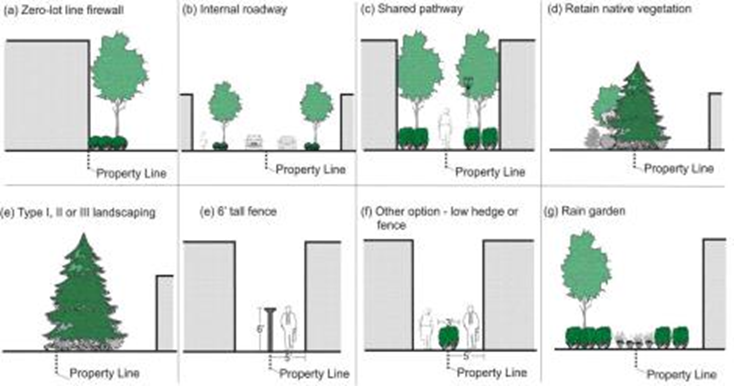
Figure 13. Side and rear yard design treatments.
(4) Design Principle. Enhance solar access and privacy for residential uses along rear and side yards. Specifically:
(a) Buildings or portions thereof containing dwelling units whose solar access is only from the applicable side of the building (facing towards the side property line) shall be set back from the applicable side or rear property lines at least 15 feet; see Figure 14.
(b) Transparent windows shall occupy no more than 10 percent of any facade within 15 feet of the side or rear property line facing an adjoining property where either property’s residential privacy may be compromised. The Director may waive this requirement where he or she finds that it achieves no practical increase in privacy.
(c) Balconies shall be set back at least 10 feet from side or rear yard property lines separating adjoining residential or mixed-use properties. Balconies or rooftop decks within 15 horizontal feet of a side property line must utilize opaque guard rails to minimize impacts to privacy on adjoining properties.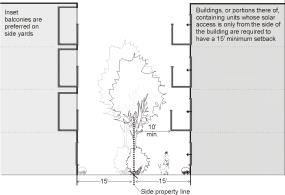
Figure 14. Solar access and privacy standards for multifamily residential buildings along side/rear yards.
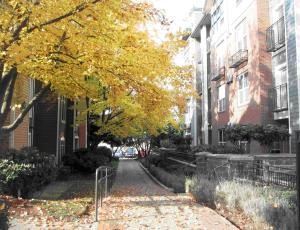
Figure 15. Internal walkway example between different multifamily developments.
(Ord. 737 § 2 (Att. A), 2022)
21.33.130 Site planning – Multiple building/large lot developments and large format retail stores.
(1) Intent. To encourage project designers to coordinate design standard requirements into an innovative organizational scheme, such as a “village green,” “small town grid,” “pedestrian square,” “perimeter walk,” etc., that integrates the new development into the existing/proposed structure and creates a pedestrian-oriented focus.
In addition to other requirements, the intent of multiple building/large lot development standards is:
(a) To reduce negative impacts to adjoining properties;
(b) To take advantage of special opportunities to create a composition of buildings and landscape features;
(c) To enhance pedestrian and vehicular circulation;
(d) To encourage transit use;
(e) To provide usable open space;
(f) To create focal points for pedestrian activity for developments; and
(g) To enhance the visual character of the community.
(2) Multibuilding/Large Lot Development Design Principle. Take advantage of special opportunities to mitigate impacts of multiple building and large developments (sites over two acres) through implementing measures such as the following:
(a) The site planning for all developments must demonstrate a unifying, organized design that:
(i) Incorporates open space and landscaping as a unifying element (see WMC 21.33.260, Pedestrian activity and plazas, and Chapter 21.36 WMC, Landscaping);
(ii) Where possible, incorporates screening, environmental mitigation, utilities, and drainage as positive elements (example: create a “natural” open space or wet pond as a site feature to accommodate surface water runoff); and
(iii) Provides pedestrian paths or walkways connecting all businesses and the entries of multiple buildings as required by WMC 21.37.130.
(b) Provide pedestrian paths from/to all transit stops through commercial areas to residential areas within 1,200 feet of the site.
(c) Enhance transit stops by providing rider convenience and amenities such as weather protected seating, newspaper dispensers, postal boxes, automated teller machines (ATMs), and small vendor spaces.
(d) Integrate pedestrian accommodations for transit stops into the development of public and private streets, in addition to WMC 21.37.110.
(e) Integrate on-site pedestrian circulation with adjoining right-of-way activity and development.
(f) Provide on-site pedestrian-oriented space at the following ratio: one percent of applicable lot area plus one percent of nonresidential floor area.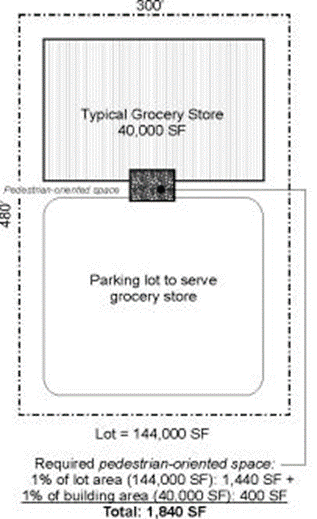
Figure 16. Illustrating how much pedestrian-oriented space would be required for a typical grocery store served by surface parking.
(3) Large Format Retail Store Design Principle. In the design of the building and site layout, mitigate the impacts of large format retail stores containing over 60,000 gross square feet through the application of the following measures:
(a) Provide centralized and visible pedestrian-oriented space at a ratio of one percent of applicable lot area plus one percent of nonresidential floor area, said space to include accessible covered seating (under canopy, awning, pergola, sheltering roof, or other similar architectural feature), landscaping and a water feature or public art;
(b) Provide roofline treatments to break down the size of the buildings;
(c) Provide 15-foot-wide Type 3 landscape buffer in accordance with WMC 21.36.060 between sidewalk and nonpedestrian-oriented facade. The Director may approve a reduction in the width of the landscape buffer to not less than five feet upon demonstration that the intent of this section and the design principle of this subsection (3) have been fulfilled within the parcel;
(d) Provide 15-foot-wide Type 3 landscape buffer in accordance with WMC 21.36.060 between sidewalk and on-site parking. The Director may approve a reduction in the width of the landscape buffer to not less than five feet upon demonstration that the intent of this section and the design principle of this subsection (3) have been fulfilled within the parcel;
(e) Provide on-site pathway along building facade at least 12 feet in width and include street trees;
(f) Minimize access points from public street onto site;
(g) Screen service areas with landscaping and solid wall or fence;
(h) Provide parallel parking along major access roads located on site;
(i) Provide an enhanced building entry;
(j) Provide landscaped, raised pedestrian pathways; pedestrian-scaled lighting and sheltering roofs through parking areas as required in WMC 21.37.130, Pedestrian circulation and access (see Figure 37, Parking lot pathway configuration, also Figures 114 and 115 in WMC 21.33.380, Northwest woodland character design standards illustrative guide);
(k) Include uses that will expand the range of activities in downtown. Such uses might include a cultural or performing arts facility, public assembly area, and similar uses that will encourage pedestrian activity and/or support for other business or community activities;
(l) Other significant features that exceed the development standards and regulations.
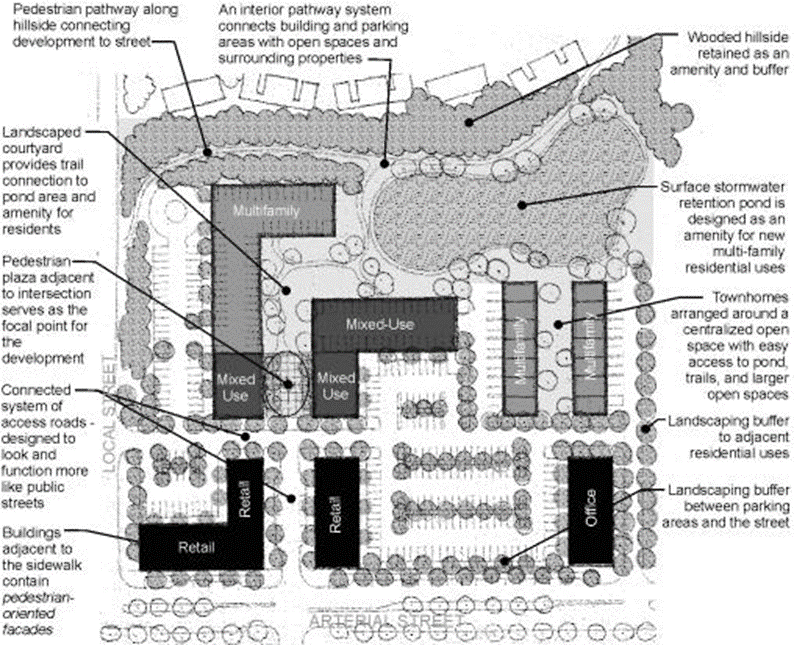
Figure 17. An example of a multiple building/large lot development that incorporates the implementation measures in this section.
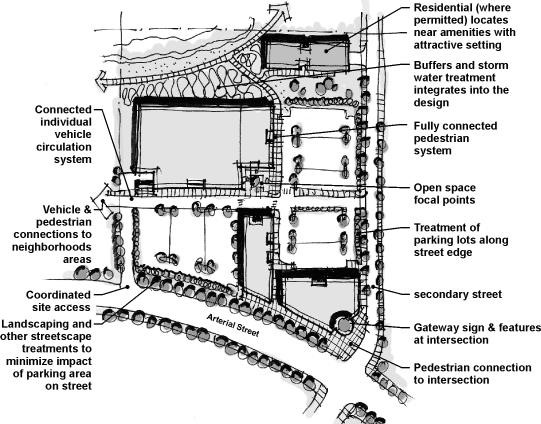
Figure 18. Another large site development example incorporating many of the implementation measures in this section.
(Ord. 737 § 2 (Att. A), 2022)
21.33.140 Mechanical equipment and service areas.
(1) Intent.
(a) To minimize adverse visual, olfactory, or auditory impacts of mechanical equipment and service areas at ground and roof levels; and
(b) To encourage more thoughtful siting of trash containers and service areas.
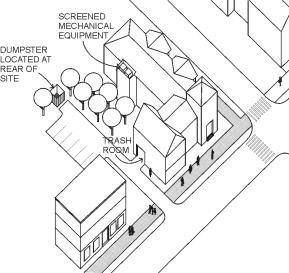
Figure 19. Locate service elements to reduce impacts on the pedestrian environment.
(2) Design Principle. Reduce impacts of refuse containers and storage areas. Implementation measures:
(a) Service areas (loading docks, trash containers, compactors, mechanical equipment, and storage yards) shall be located to avoid negative visual, auditory (noise), olfactory, or physical impacts on the street environment and adjoining residentially zoned or developed properties.
(b) Refuse containers are not to be visible from the sidewalk and adjacent properties. Acceptable materials include brick, concrete block, stone, or wood. Cyclone fencing is prohibited. The sides and rear of the enclosure shall be screened as described in WMC 21.40.020.
(c) Buildings in the Downtown and Little Bear Creek Corridor (see Chapter 21.22 WMC) with 30 or more dwelling units or nonresidential buildings with a gross building floor area over 30,000 square feet shall have an interior service and trash room sufficient to house refuse containers for building uses.
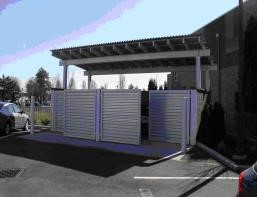
Figure 20. Acceptable service enclosure example.
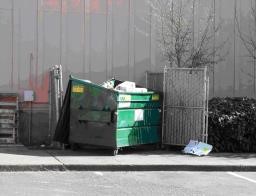
Figure 21. Unacceptable example of a service enclosure with cyclone fencing.
(d) Screened trash containers shall be a minimum of 44 feet from the wall of any structure where there is access to the structure for the public.
(e) Mechanical equipment should be located and screened at ground level and attached to structures to reduce visual impacts from streets and adjoining properties.
(f) Service areas should be located and screened to reduce adverse sensory impacts.
(g) Roof-mounted mechanical equipment should be located and screened so the equipment is not visible within 150 feet of the structure when viewed from the ground level of adjoining properties. Match the color of roof-mounted equipment with the exposed color of the roof to minimize visual impacts when equipment is visible from higher elevations nearby.
(h) Utility Meters, Electrical Conduit, and Other Service Utility Apparatus. These elements shall be located and/or designed to minimize their visibility to the public. Project designers are strongly encouraged to coordinate with applicable service providers early in the design process to determine the best approach in meeting these standards. If such elements are mounted in a location visible from the street, pedestrian pathway, common open space, or shared auto courtyards, they shall be screened with vegetation or by architectural features.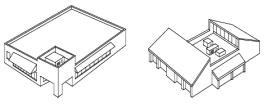
Figure 22. Examples of how to screen roof-mounted mechanical equipment.
Figure 23. Preferred and disfavored utility meter configurations. The examples on the left are consolidated and somewhat screened by landscaping elements, whereas the right examples are exposed and degrade the character of these townhomes.
(Ord. 737 § 2 (Att. A), 2022)
21.33.150 Design standards for outdoor sales lots.
The intent of the standards for outdoor sales lots is to reduce the visual impact of outdoor storage of vehicles or other outdoor sales items, and to encourage the use of landscaping and other site features to improve the site aesthetics. The following standards shall be satisfied for outdoor sales lots:
(1) Buildings should be located abutting the street, in accordance with WMC 21.33.110. The outdoor sales area is encouraged to be to the rear of the main building.
(2) Outdoor sales lots adjacent to streets shall be screened from any street and/or sidewalk by one of the following methods:
(a) Provide a five-foot-wide planting bed that incorporates a continuous three-foot-tall wall. The wall shall be constructed of brick, stone, decorative concrete or concrete block, or other permanent material that provides visual interest and helps to define the street edge, as determined by the Director. The landscaping shall provide a continuous row of shrubs, trees spaced 25 feet on center, and groundcover that provides continuous coverage within five years.
(b) Provide an elevated planter that is a minimum of five feet wide and between two and three feet in height. The ledges shall be a minimum of six inches in depth. The planter must be constructed of masonry, concrete or other permanent material that effectively contrasts with the color of the sidewalk and combines groundcover and annuals, perennials, ornamental grasses, low shrubs, and/or small trees that provide seasonal interest and winter greenery, as determined by the Director.
(c) Provide a 15-foot-wide area of Type 2 landscaping in accordance with WMC 21.36.060.
For all of the options above, eye level visibility between the street/sidewalk and parking area shall be maintained for safety. This means that shrubs and other low plantings should be maintained below three feet in height, while trees (once they achieve taller heights) should generally be trimmed up to the eight-foot level. See Figure 9. The planting beds in both options shall be irrigated unless the Director determines it is not necessary for the plant materials selected.
(3) Outdoor sales lots directly abutting a critical area or critical area buffer shall provide a minimum 10-foot-wide area of Type 1 landscaping in accordance with WMC 21.36.060 outside the buffer.
(4) Lighting for outdoor sales lots shall include fixtures that are nonglare and mounted no more than 25 feet above the ground, with lower fixtures preferable so as to maintain a human scale. Requests for higher lighting fixtures may be considered with the approval of the Director. All fixtures shall be fitted with a full cut-off shield.
(5) Access from streets to outdoor sales lots may be restricted to no more than one entrance lane and one exit lane per 300 linear feet of property as measured horizontally along the street face.
(6) Pedestrian access through outdoor sales lots is required. For this access, provide landscaped, raised pedestrian pathways, pedestrian-scaled lighting and sheltering roofs through sales lot areas. A minimum of one pathway shall be provided. Additional pathways may be required, pursuant to WMC 21.37.130. Pathways shall be designed in accordance with WMC 21.37.130.
(7) Landscaping for sales lots shall meet the requirements for parking lot landscaping in WMC 21.36.080. A minimum of 15 percent of the site, excluding any area within critical areas or buffers, must be landscaped. (Ord. 737 § 2 (Att. A), 2022)
21.33.160 Design standards for gasoline service stations.
The intent of the standards for gasoline service stations is to protect and enhance the character and quality of commercial districts and adjacent neighborhoods where these stations are allowed; provide for safe pedestrian access; create high quality gasoline service stations in architecture and site design; and maintain and strengthen a recognizable identity and character unique to Woodinville. The following standards shall be satisfied for fuel service stations in the Central Business District and General Business zones:
(1) Building design shall meet the design standards requirements of this chapter, and the following standards:
(a) All portions of a building should express consistent architectural detail and character. All site walls, screen walls and pump island canopies and other outdoor covered areas should be architecturally integrated with the building by using similar material, color, and detailing.
(b) Buildings should be located abutting the street, in accordance with WMC 21.33.110. The pump islands are encouraged to be to the rear or the side of the main building. Where the pump islands are located abutting the street, a vertical trellis or screen of not less than 30 inches, with climbing vines or other approved screening materials, shall be provided.
(c) Noise-generating areas, including auto service bays, car wash openings, vacuum stations, loading areas, garbage storage and stacking lanes, shall be located so they are faced away from sensitive uses such as residential uses, and educational facilities.
(d) Potential noise impacts shall be buffered with solid attenuations with one of the following: structures, landscaped berms, or attenuation fencing (minimum six feet in height) complemented with landscaping.
(e) Enclose all utility equipment within buildings or screen them from streets and private properties. These include utility boxes, garbage, and recycling container storage, loading docks and ramps, and air conditioner compressors.
(2) Pedestrian access to the site shall be provided, at a minimum width of five feet and using an alternative paving treatment than is used for the remainder of the site.
(3) The canopy shall meet the following standards:
(a) The canopy should be integrated with the building. Multiple canopies or canopies that express differing architectural masses are encouraged.
(b) The materials of the canopy shall meet the requirements of WMC 21.33.360 and are encouraged to use heavy timber framing.
(c) Lighted bands or tubes or applied bands of corporate color are prohibited.
(4) The pump islands, including fuel dispensers, refuse containers, payment points, safety bollards, and other appurtenances, shall meet the following standards:
(a) The design of pump islands shall be architecturally integrated with other structures on site using similar colors, materials, and architectural detailing.
(b) The use of translucent materials and internally lighted cabinets is prohibited as finishes or as applied treatments at the pump island or on the canopy.
(c) Either a pump island curb or bollard is required for the protection of dispensing units.
(5) Where a car wash is proposed, the following standard shall be met:
(a) Glass windows shall be provided for the portions of the car wash that face public areas.
(6) The landscaping for gas stations shall meet the following standards:
(a) In-ground landscaping should comprise the majority of the landscaping requirement. Raised planters are acceptable when designed to accentuate the architecture and/or create pedestrian seating areas.
(b) Street Frontage Landscaping. Provide a 10-foot-width of Type 3 landscaping in accordance with WMC 21.36.060.
(c) Perimeter Landscaping. Provide a 10-foot-wide of Type 3 landscaping in accordance with WMC 21.36.060, except for fuel stations that abut residential uses shall provide a 20-foot width of Type 1 landscaping in accordance with WMC 21.36.060.
(d) Interior Landscaping. A minimum of 15 percent of the site, excluding any area within critical areas or buffers, must be landscaped. The minimum requirements in WMC 21.36.040 shall be met for landscaping areas.
(e) Proper maintenance and timely replacement of plant material is expected and required by WMC 21.36.120.
(7) The lighting for fuel service stations shall meet the following standards:
(a) The site lighting requirements of WMC 21.40.040 shall be met.
(b) All fixtures shall be fitted with a full cut-off shield and aimed downward.
(c) All luminaires should be recessed or shielded so the light source is not directly visible from the property line. (Ord. 737 § 2 (Att. A), 2022)
21.33.170 Site planning – Integration of LID and stormwater retention.
(1) Intent. To integrate low impact development (LID), including reduction of impervious surfaces and stormwater retention methods such as bioretention facilities, into site design.
(2) Design Principle. Design the site to reduce impervious surfaces and site disturbance to the extent feasible.
(3) Design Principle. Integrate LID techniques such as bioretention swales, cells and planters and vegetated water quality treatment facilities such as biofiltration swales and ponds into the overall site design. Methods of integrating retention and filtration are listed below in order of preference:
(a) Locate bioretention swales, cells, or ponds and/or biofiltration swales, ponds, or other approved LID systems as part of a landscape screen. Trees may be planted in or near a bioretention facility and near a grass swale as long as the trees do not substantially shade the vegetation within the facility. The facility should be designed so it does not impede pedestrian circulation or shared parking between two or more properties;
(b) Where topography is favorable, locate a bioretention facility, vegetated water quality facility, or other approved LID system within the paved parking or service area. The facility should be landscaped as part of the required internal parking lot landscaping and oriented so it does not impede pedestrian circulation;
(c) Locate a bioretention facility, vegetated water quality facility, or other approved LID system along the front edge of the property. Incorporate landscaping and screening to visually enhance the facility without reducing maintainability and sun exposure; or
(d) The incorporation of screening elements and/or landscaping into LID facilities and biofiltration swale designs is encouraged if the feature is located and/or designed as a positive landscaping feature with approved design and plant materials. Where possible, native vegetation should be used, which may be counted as part of the required site landscaping.
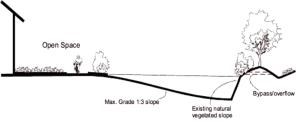
Figure 24. Biofiltration swale designed as an amenity.
(Ord. 737 § 2 (Att. A), 2022)
21.33.180 Street corners.
(1) Intent.
(a) To create and preserve visual images for identification and spatial reference at street corners; and
(b) To enhance the pedestrian environment at street corners.
(2) Design Principle. Enhance the visual quality of corners at the intersections of public streets. Implementing measures:
(a) All development proposals for street corner sites must include at least one of the design treatments described below (in order of preference):
(i) Locate a building towards the street corner (within 15 feet of corner property line);
(ii) Provide pedestrian-oriented space at the corner leading directly to a building entry or entries; or
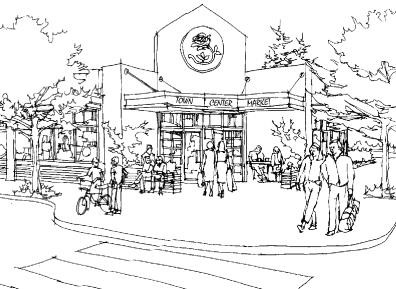
Figure 25. This example includes both a building located towards the street corner and a small pedestrian-oriented space.
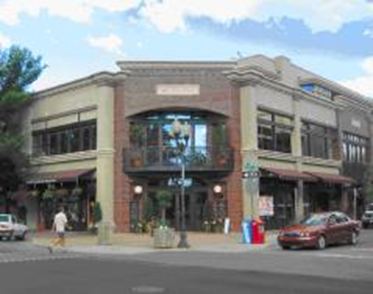
Figure 26. Street corner building example.
(iii) If subsections (2)(a)(i) and (ii) of this section are not feasible per the Director, consider the following options:
(A) Install substantial landscaping (at least 30 feet by 30 feet or 900 square feet of ground surface area with trees, shrubs, and/or ground cover). The space may include a special architectural element, such as a trellis, to add identity or demarcation of the area. Such an architectural element may have a sign incorporated into it (as long as such sign does not identify an individual business or businesses);
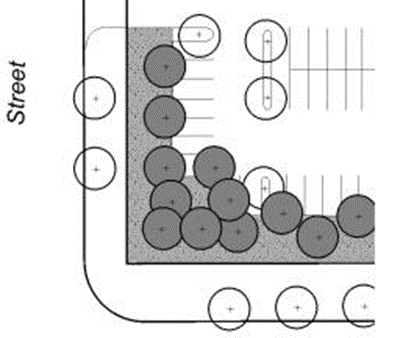
Figure 27. Substantial landscaping (at least 30 feet by 30 feet or 900 square feet adjoining to the street corner).
(B) Install a decorative screen wall (at least two and one-half feet high), a trellis, or other continuous architectural element, with a length of at least 20 feet along the front property line. Height and location of elements are not to create a visibility or security problem; or
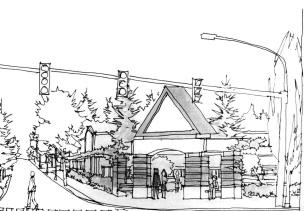
Figure 28. Decorative architectural element adjacent to the street corner.
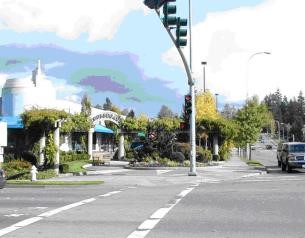
Figure 29. This street corner successfully combines landscaping with architectural elements. Signage demarcates the area, not an individual store.
(iv) Other element or method would be considered for approval if the proposed element or method conforms with the intent of this section as determined by the Director.
(b) Parking lots may not be located adjoining to street corners where one or both streets are designated pedestrian-oriented streets. The Director may make exceptions where lots are surrounded by three or more pedestrian-oriented streets or where other more desirable development configurations are possible without strict enforcement of this standard.
(3) Key Corners in Downtown and Little Bear Creek Corridor. The following additional standards are required for key corners in the Downtown and Little Bear Creek Corridor (see Chapter 21.22 WMC):
(a) Buildings abutting the intersection of NE 175th Street and 135th Avenue NE, NE 173rd Street and 135th Avenue NE, NE 175th Street and 140th Avenue NE or NE 175th Street and 138th Avenue NE (Garden Way) shall incorporate all of the following design elements:
(i) Locate a building towards the street corner (within 15 feet of corner property line);
(ii) Provide an entry at the corner;
(iii) Provide a notch or a cut-out to the building corner. The notch or cut-out must be large enough to create additional sidewalk/pedestrian area adjoining to the corner equaling no less than 75 square feet; and
(iv) Provide a key architectural feature at the corner pursuant to WMC 21.33.340.
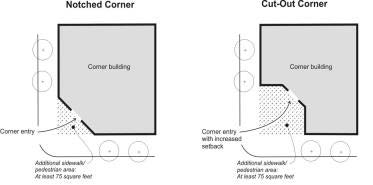
Figure 30. Examples of notched and cut-out building corners.
(Ord. 737 § 2 (Att. A), 2022)
21.33.190 Site lighting.
(1) Intent.
(a) To encourage the use of lighting as an integral design component to enhance buildings, landscaping, or other site features.
(b) To encourage night sky visibility and to reduce the general illumination of the sky in Woodinville.
(c) To reduce horizontal light glare and vertical light trespass from a development onto adjoining parcels and natural features.
(d) To encourage the judicious use of lighting in conjunction with other security methods to increase site safety.
(e) To discourage the use of lighting for advertising purposes.
(2) Design Principle. Provide adequate lighting levels in all areas used by pedestrians or automobiles, including building entries, walkways, parking areas, circulation areas, and other open space areas.
New developments shall provide site lighting that meets the following design criteria through implementing measures such as:
(a) All public areas shall be lighted with average minimum and maximum levels as follows:
(i) Minimum (for low or nonpedestrian and vehicular traffic areas) of one-half foot-candles;
(ii) Moderate (for moderate or high-volume pedestrian areas) of one to two foot-candles; and
(iii) Maximum (for high volume pedestrian areas and building entries) of four foot-candles.
(b) Lighting shall be provided at consistent levels, with gradual transitions between maximum and minimum levels of lighting and between lit areas and unlit areas. Highly contrasting pools of light and dark areas shall be avoided.
(c) Parking lot lighting fixtures shall be nonglare and mounted no more than 25 feet above the ground, with lower fixtures preferable so as to maintain a human scale. Requests for higher lighting fixtures may be considered with the approval of the Director. All fixtures over 15 feet in height shall be fitted with a full cut-off shield.
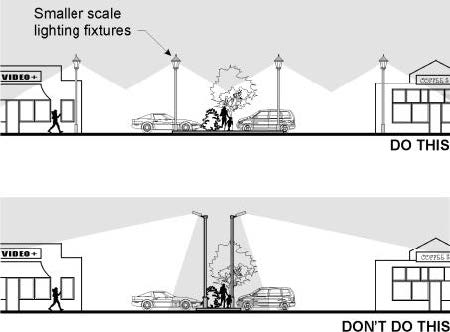
Figure 31. Acceptable and unacceptable parking lot lighting.
(d) Pedestrian-scaled lighting (light fixtures no taller than 15 feet) is encouraged in areas of pedestrian activity. Lighting shall enable pedestrians to identify a face 45 feet away in order to promote safety.
(e) Lighting should not be permitted to trespass onto adjoining private parcels, nor shall light source (luminaire) be visible at the property line. All building lights shall be directed onto the building itself and/or the ground immediately adjoining to it. The light emissions should not be visible above the roofline of the building. Light fixtures other than traditional cobra heads are encouraged. (Ord. 737 § 2 (Att. A), 2022)
21.33.200 Site landscaping.
(1) Intent. To encourage the abundant use of gardens and other landscaping in site and development design to improve site aesthetics, enhance the pedestrian experience, and increase the uniqueness of Woodinville.
(2) Design Principle. All developments shall comply with the landscaping provisions of Chapter 21.36 WMC and demonstrate in their development plans how they meet the intent.
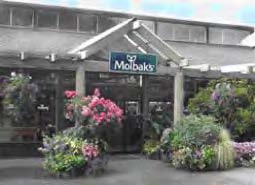
Figure 32. Molbak’s landscaping elements are a major character defining element of Woodinville’s downtown.
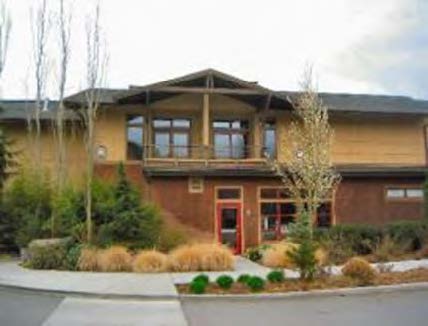
Figure 33. Much of the charm of Willows Lodge is from the colorful and diverse landscape.
Other implementing measures:
(a) Townhomes and all other multifamily dwelling units with private exterior ground-floor entries must provide at least 20 square feet of landscaping adjacent to the entry. This is particularly important for units where the primary entrance is next to private garages off of an interior access road. Such landscaping areas soften the appearance of the building and highlight individual entries. Figure 34 illustrates one example without landscaping and two examples that would meet the standard. Also, see Figure 35.
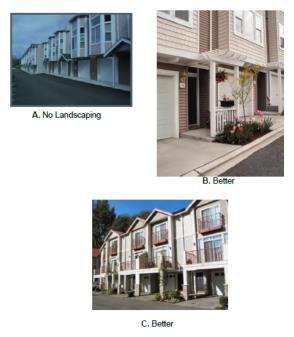
Figure 34. Image “A” is an example where there is no landscaping near the entry. Images “B” and “C” are more desirable examples with individual planting strips that soften the buildings, highlight the individual entries, and help to de-emphasize the garages.
Figure 35. Another good example. These units face the street and contain their required landscaping in the front yard. Garages are off an alley, where in this case landscaping would not be required.
(Ord. 737 § 2 (Att. A), 2022)
21.33.210 General pedestrian access requirements.
(1) Intent.
(a) In keeping with the City’s commitment to pedestrians, priority treatment is given to pedestrian accommodations in the design of transportation modes for on-site developments using City street standards.
(b) To improve the pedestrian environment by making it easier, safer, and more comfortable to walk between businesses, on street sidewalks, to transit stops, and through parking lots.
(c) Pedestrian facilities such as sidewalks, crosswalks, and bus shelters should connect all modes of transportation.
(d) To provide convenient pedestrian circulation connecting all on-site activities to adjacent pedestrian routes and streets.
(2) Design Principle. Provide safe, convenient pedestrian circulation for all users. Specifically:
(a) Provide pedestrian access onto the site from the main street off of which the use is located. Where a use fronts two streets, access shall be provided from the road closest to the main entrance, but preferably from both streets.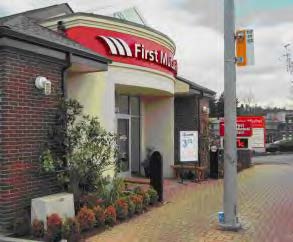
Figure 36. Provide pedestrian access to the site from the street.
(b) Provide pedestrian access in accordance with WMC 21.37.130, Pedestrian circulation and access, unless otherwise directed by these design standards.
(c) Access shall conform with Federal, State, and local codes including the Americans with Disabilities Act.
(d) Provide safe, convenient, on-site pedestrian circulation.
(i) Provide paved pedestrian path(s) from the street sidewalk to the main entry of all buildings.
(ii) Buildings with entries not facing the street shall have a clear and obvious pedestrian accessway from the street sidewalk to the entry.
(e) Developments should adapt building access to site conditions for level, convenient, clearly identified pedestrian entry. (Ord. 737 § 2 (Att. A), 2022)
21.33.220 Pathways through parking lots.
(1) Intent.
(a) To provide safe and convenient pedestrian paths from the street sidewalk through parking lots to building entries in order to encourage pleasant walking experiences between businesses.
(b) To provide an inviting, pleasant pedestrian circulation system that integrates with parking and serves as access to nearby businesses.
(2) Design Principle. Provide pathways through parking lots. Specifically:
(a) Developments must provide specially marked or paved walkways through parking lots in accordance with WMC 21.37.130. Generally, walkways should be provided every four rows and a maximum distance of 150 feet shall be maintained between paths. Where possible, align the pathways to connect with major building entries or other destinations.
(b) Integrate on-site walkways with required parking lot landscaping.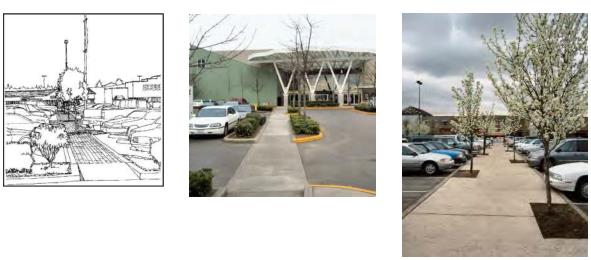
Figure 37. Parking lot pathway examples.
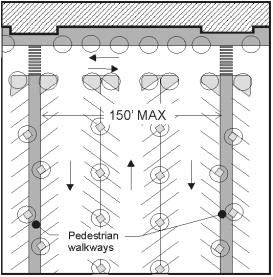
Figure 38. Parking lot pathway configuration.
(Ord. 737 § 2 (Att. A), 2022)
21.33.230 Sidewalks – Size and materials.
(1) Intent.
(a) To provide safe, convenient, and pleasant pedestrian sidewalks for circulation along all streets.
(b) To improve the character and identity of commercial areas consistent with the City’s Comprehensive Plan vision.
(2) Design Principle. Utilize appropriate sidewalk widths, materials, designs, and construction standards to enhance pedestrian access and complement City life. Specifically:
(a) Required minimum sidewalk widths along both sides of streets:
(i) Twelve feet along pedestrian-oriented streets; and
(ii) Eight feet along streets not designated as pedestrian-oriented streets;
(iii) For streets in the Downtown and Little Bear Creek Corridor (see Chapter 21.22 WMC), see Table 21.33.110(2) for sidewalk dimensions.
(b) Sidewalks must be constructed per the Transportation, Infrastructure Standards and Specifications unless otherwise directed by these design standards.
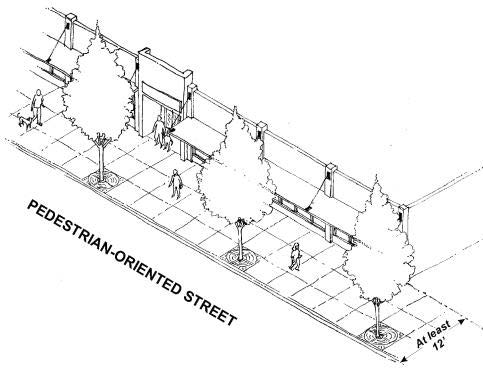
Figure 39. Sidewalk width on both sides of pedestrian-oriented streets.
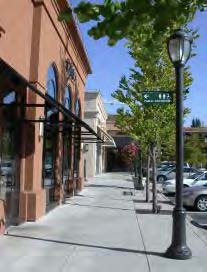
Figure 40. An example sidewalk for a pedestrian-oriented street. Note the street trees and pedestrian-style lighting.
(c) The sidewalk materials, colors, and textures shall be determined by the Director, based on the following:
(i) Adopted street improvement plans, where applicable;
(ii) Goals and policies of the Comprehensive Plan and adopted subarea plans, where applicable; and
(iii) Sidewalk improvements on the subject property or adjoining sites when desirable.
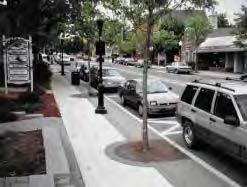
Figure 41. This decorative sidewalk pavement adds visual interest and character to the street. Where distinctive sidewalk patterns have been established, new development may be required to extend the pattern onto the project site.
(d) The Director may require street trees to be placed within grates near the curb edge similar to the images in Figures 39 through 41.
(e) If the City has a programmed street improvement for the public right-of-way in front of a building to be constructed, the required 12-foot minimum width shall be measured from the proposed back of the curb location and may include public right-of-way and private property. Upper building stories may extend to the front property lines as long as they do not restrict pedestrian traffic. All new fences, screen walls, and other obstructions to pedestrian traffic shall also be set back 12 feet from the back of the curb if located on a pedestrian-oriented street.
.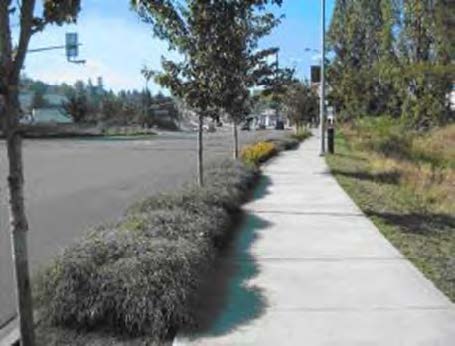
Figure 42. Planting strips are desirable along streets where there is no on-street parking.
(Ord. 737 § 2 (Att. A), 2022)
21.33.240 Pedestrian amenities.
(1) Intent.
(a) To provide pedestrian spaces that include accommodations for seasonal climate conditions for a variety of activities.
(b) To provide amenities along sidewalks and pathways that enrich the pedestrian environment.
(c) To encourage walking, both as a recreational activity and as a means of transportation.
(2) Design Principle. Provide pedestrian weather protection in public spaces such as transit stops, building entries, along display windows, and over outdoor dining areas. Specifically:
(a) Weather protection at least six feet deep is required over all primary building, individual business, and individual residence entries. This may include a recessed entry, canopy, porch, marquee, or building overhang.
(b) All buildings located along pedestrian-oriented streets must comply with the standards and guidelines related to weather protection in WMC 21.33.110(2)(b).
(c) Canopies, awnings, or other similar weather protection features shall not be higher than 15 feet above the ground elevation at the highest point or lower than eight feet at the lowest point. The street-side edge of the canopy or awning shall be at least eight feet above the walking surface.
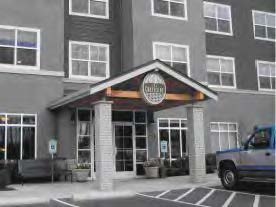
Figure 43. Provide weather protection over building entries.
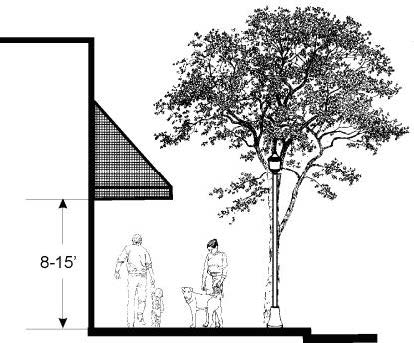
Figure 44. Height standards for weather protection features.
(d) The color, material, and configuration of the pedestrian coverings shall be as approved by the Director. Coverings with visible corrugated metal or corrugated fiberglass are not permitted unless approved by the Director. Fabric and rigid metal awnings are acceptable if they meet the applicable standards. All lettering, color and graphics on pedestrian coverings must conform to the City’s sign code in Chapter 21.44 WMC.
(e) Multi-tenant retail buildings are encouraged to use a variety of weather protection features to emphasize individual storefronts and reduce the architectural scale of the building. Figure 45 provides an unacceptable and a better example.
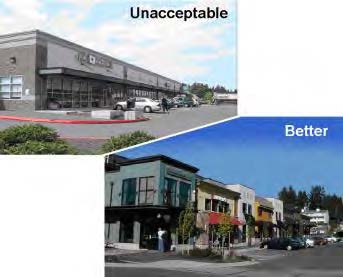
Figure 45. The continuous canopy on top is monotonous and de-emphasizes individual storefronts. The bottom example provides a variety of weather protection features and represents a more desirable example.
(f) Pedestrian amenities must be included along all pedestrian-oriented streets. Specifically, one or more of the desired amenities listed below must be included for each 100 lineal feet of street frontage. For multistory buildings, two different types of amenity features are required for each 100 lineal feet of street frontage. The type, location, and design of chosen amenities must contribute to a well-balanced mix of features on the street, as determined by the Director. Desired amenities include (see Figure 46 for examples):
(i) Pedestrian-scaled lighting (placed between 12 and 14 feet above the ground);
(ii) Pedestrian furniture, such as seating space, approved trash receptacles, consolidated newspaper racks, bicycle racks, and drinking fountains. Seating areas and trash receptacles are particularly important where there is expected to be a concentration of pedestrian activity (such as near major building entrances and transit stops) and may be required by the Director;
(iii) Planting beds, hanging flower baskets, and/or large semipermanent potted plants;
(iv) Decorative pavement patterns and tree grates;
(v) Informational kiosks;
(vi) Transit shelters;
(vii) Decorative clocks;
(viii) Artwork; and
(ix) Other amenities that meet the intent.
Features above that are publicly funded, already required by code, and/or obstruct pedestrian movement will not qualify as an amenity to meet this standard.
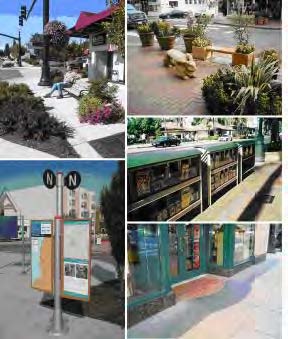
Figure 46. Examples of desired pedestrian amenities.
(g) Secondary Public Access. Whereas these design standards require businesses on a pedestrian-oriented street within the CBD zone to front on streets rather than parking lots, a large number of customers use the “secondary” entry off of the parking lot. Such businesses that have secondary public access shall comply with the following measures to enhance secondary public access (applies only to entries used by the public):
(i) Weather protection at least three feet deep is required over each secondary entry.
(ii) A sign may be applied to the awning; provided, that the sign complies with Chapter 21.44 WMC; awning signs on the building are similar in mounting, location, configuration, materials, and construction; and the sign area does not exceed four and one-half square feet as measured under WMC 21.44.050.
(iii) Two or more of the following design elements must be incorporated within or adjacent to the secondary entry:
(A) A transparent window or door to allow visibility into the business;
(B) A landscaping bed, planter box, or trellis incorporating landscaping adjacent to the entry;
(C) Decorative architectural treatments that add visual interest to the entry;
(D) Outdoor dining area or pedestrian-oriented space;
(E) Decorative lighting;
(F) Other design elements that meet the intent per the Director; or
(G) Plant containers (planters) that allow for a minimum four-foot passage on walks serving the public access. Planters shall be maintained with viable plant materials or removed.
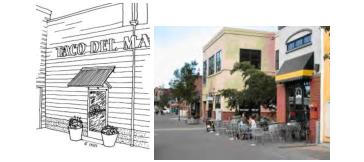
Figure 47. Examples of secondary public access. Note the planters, window sign, and awning.
(Ord. 737 § 2 (Att. A), 2022)
21.33.250 Internal pedestrian paths and circulation.
(1) Intent.
(a) To provide safe and direct pedestrian access in commercial areas to accommodate pedestrian movement patterns, to minimize conflicts between pedestrians and vehicular traffic, and to provide pedestrian connections to neighborhoods.
(b) To provide safe routes for the pedestrian and disabled person across parking, to entries, and between buildings.
(c) To accommodate noncompetitive/noncommuter bicycle riders who use bicycles on short trips for exercise and convenience.
(d) To provide attractive internal pedestrian routes that promote walking and enhance the character of the area.
(e) To provide a network of pedestrian pathways that can be expanded over time.
(f) To encourage pedestrian amenities along pathways, such as artwork, landscaping elements, and architectural details.
(2) Design Principle. Provide safe and direct access in commercial areas for all users. Specifically:
(a) Provide pedestrian circulation routes in accordance with WMC 21.37.130 from building entries of businesses to:
(i) Services within the same development;
(ii) Building entries of nearby residential complexes; and
(iii) Sidewalks along abutting roadways.
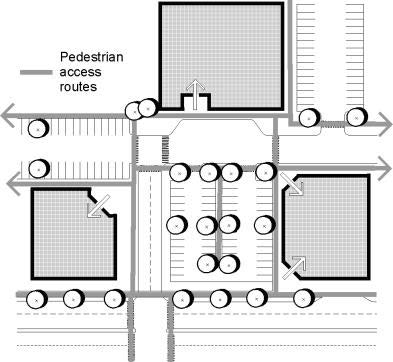
Figure 48. This development provides clear pedestrian connections from the street, between buildings, through parking lots, and to adjoining uses.
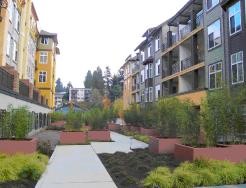
Figure 49. An example of an attractive pedestrian connection through a large development.
(b) Where possible, provide steps and ramps across retaining walls and slopes in accordance with WMC 21.37.130.
(c) Fences shall provide for pedestrian access by gates to shopping and other common activities, especially to transit.
(d) When abutting vacant sites or properties with the potential for redevelopment, new developments shall provide for the opportunity for future pedestrian connections per the Director through the use of pathway stub-outs, building configuration, and/or parking lot layout. New development and redevelopment projects shall provide pedestrian connections per the Director to pathway stub-outs on abutting parcels.
(e) Adjacent landscaping shall not block visibility to and from a path, especially where it approaches a roadway or driveway according to WMC 21.40.060.
(f) Pedestrian walks shall be separated from structures at least three feet for landscaping except where the adjoining building features a pedestrian-oriented facade. The Director will consider other treatments to provide attractive pathways. Examples include sculptural, mosaic, bas-relief artwork, or other decorative treatments that meet the intent (Figure 51 provides one example).
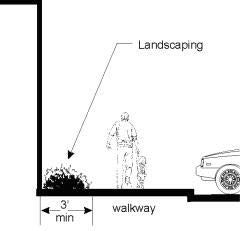
Figure 50. Provide landscaping between walkways and structures.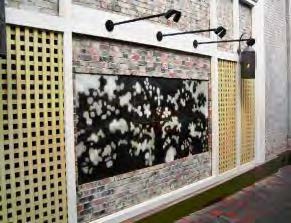
Figure 51. Wall treatment to provide interest along a walkway.
(3) Design Principle. Provide wide pathways adjacent to the facades of retail and mixed-use buildings where they are not adjoining to the street. Specifically:
(a) Pathways along the facade of mixed-use and retail buildings 100 feet or more in length (measured along the facade) that are not located adjoining to a street must be at least 12 feet wide with an eight-foot minimum unobstructed width and include the following:
(i) Street trees, as approved by the Director, should be placed at an average of 30 feet on center and placed in grates. Breaks in the tree coverage will be allowed near major building entries to enhance visibility. However, no less than one tree per 60 lineal feet of building facade must be provided;
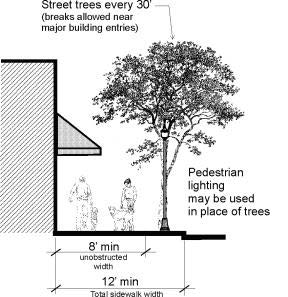
Figure 52. Pathway standards when adjoining to the facade of a mixed-use or retail building 100 feet or more in length.
(ii) Planting strips may be used between any vehicle access or parking area and the pathway; provided, that the required trees are included, and the pathway is at least eight feet in width and the combined pathway and planting strip are at least 15 feet in width; and
(iii) Pedestrian-scaled lighting may be used as a substitute to the required street trees subject to Director approval, provided they are used at the same intervals.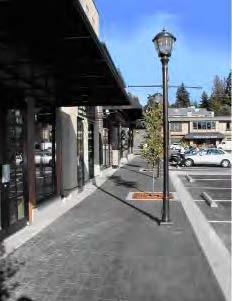
Figure 53. This off-street multi-tenant retail building incorporates wide walkways with street trees and pedestrian lighting. As a result, it looks more like a traditional city sidewalk rather than a utilitarian strip mall walkway.
(b) For all other interior pathways, the applicant must demonstrate to the Director’s satisfaction that the proposed walkway is of sufficient width to accommodate the anticipated number of users. For example, a 10- to 12-foot-wide pathway can accommodate groups of persons walking four abreast, or two couples passing one another. An eight-foot-wide pathway will accommodate three persons walking abreast, while a five-foot-wide pathway will allow two individuals to pass comfortably. (Ord. 737 § 2 (Att. A), 2022)
21.33.260 Pedestrian activity and plazas.
(1) Intent.
(a) To provide a variety of pedestrian areas to accommodate shoppers on designated pedestrian-oriented streets.
(b) To provide safe, attractive, and usable open spaces that promote pedestrian activity.
(2) Design Principles. Provide pedestrian-oriented open space at key locations.
(a) A “pedestrian-oriented space” is an area that promotes pedestrian activity, subject to the following:
(i) A pedestrian-oriented space must have:
(A) Visual and pedestrian access (including handicapped access) into the site from a street, private access road, or nonvehicular courtyard;
(B) Paved walking surfaces of either concrete or approved unit paving;
(C) On-site or building-mounted lighting (fixtures no taller than 15 feet) providing at least four foot-candles (average) on the ground;
(D) A location in areas with significant pedestrian traffic to provide interest and security, such as adjoining to a building entry;
(E) Landscaping components that add visual interest and do not act as a visual barrier. This could include planting beds, potted plants, or both; and
(F) At least two feet of seating area (a bench or ledge at least 16 inches deep and appropriate seating height) or one individual seat per 60 square feet of plaza area or open space.
(ii) A pedestrian-oriented space is encouraged to have:
(A) Pedestrian amenities, such as a water feature, site furniture, artwork, drinking fountains, kiosks, etc.;
(B) Adjoining buildings with transparent windows and doors covering 75 percent of the facade between two feet and eight feet above the ground level;
(C) Consideration of the sun angle at noon and the wind pattern in the design of the space; and
(D) Transitional zones along building edges to allow for outdoor seating areas and a planted buffer.
(iii) A pedestrian-oriented space must not have:
(A) Asphalt or gravel pavement;
(B) Adjoining nonbuffered parking lots or service areas;
(C) Adjacent chain-link fences;
(D) Adjoining “blank walls” without “blank wall treatment”; and
(E) Outdoor storage or retail sales that do not contribute to the pedestrian-oriented environment.
(3) Implementing Actions.
(a) Minimum required pathway areas do not qualify as pedestrian-oriented space. However, if pathway and sidewalk widths are widened beyond the required width and the applicable area meets the definition of pedestrian-oriented space, then that area shall qualify as pedestrian-oriented space.
(b) See WMC 21.33.110(2)(b) for frontage treatment options along pedestrian-oriented streets.
(c) See WMC 21.33.130 for pedestrian-oriented space requirements for multiple building and large lot developments.
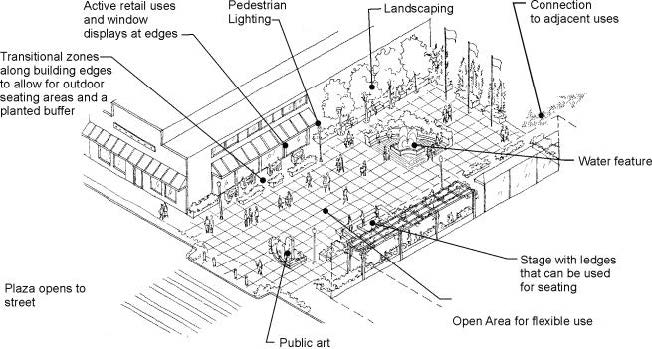
Figure 54. Example of large pedestrian-oriented space.
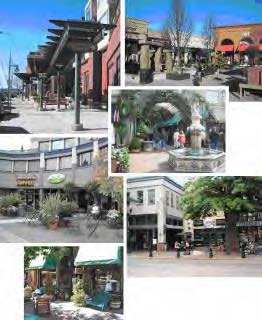
Figure 55. A variety of successful large and small pedestrian-oriented spaces.
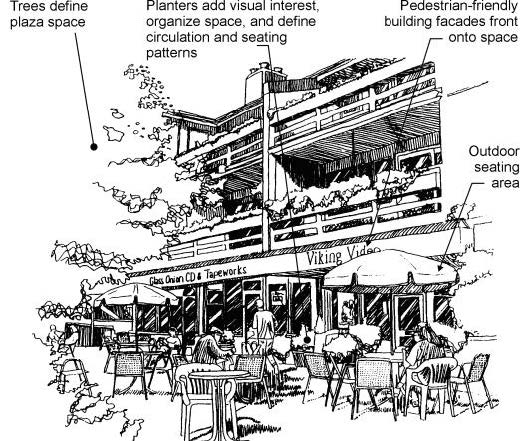
Figure 56. Example of a small pedestrian-oriented space.
(Ord. 737 § 2 (Att. A), 2022)
21.33.270 Residential open space.
(1) Intent.
(a) To create usable space that is suitable for leisure or recreational activities for residents.
(b) To create open space that contributes to the residential setting.
(2) Design Principle. Provide usable and attractive open space for multifamily residential uses. Specifically:
(a) Provide open space. Where there is a conflict with other design standards herein, the Director shall determine which standards apply.
(b) Common open space may be used for all of the required open space. This includes landscaped courtyards or decks, gardens with pathways, children’s play areas, or other multipurpose green spaces. Special requirements and recommendations for common spaces include the following:
(i) Minimum required setback areas will not count towards the open space requirement;
(ii) Space should be large enough to provide functional leisure or recreational activity per the Director. For example, long narrow spaces (less than 20 feet wide) rarely, if ever, can function as usable common space;
(iii) Consider space as a focal point of development;
(iv) Space must contribute to the residential setting of the development;
(v) Space (particularly children’s play areas) must be visible from dwelling units and positioned near pedestrian activity;
(vi) Residential units adjacent to the open space should have individual entrances to the space. Preferably, these units include a small area of semi-private open space enclosed by low level landscaping or hedges (no taller than 42 inches);
(vii) Space should feature paths, seating, lighting, and other pedestrian amenities to make the area more functional and enjoyable;
(viii) For large developments, provide for a range of activities that accommodate a range of age groups;
(ix) Space should be oriented to receive sunlight, facing east, west or (preferably) south, when possible; and
(x) Separate common space from ground-floor windows, streets, service areas, and parking lots with landscaping and/or low-level fencing. However, care should be used to maintain visibility from dwelling units towards open space for safety.
Figure 57. Good examples of common open space, including street level courtyards (top pictures), a children’s play area (lower left), and a pedestrian corridor (lower right).
(c) Individual balconies may be used to meet up to 50 percent of the required open space. To qualify as open space, balconies must be at least 35 square feet with no dimension less than four feet to provide a space usable for human activity.
(d) Rooftop decks may count for up to 50 percent of the required open space but are generally discouraged as a significant source of open space for a development, and may be used only if the following conditions are satisfied:
(i) Space must be accessible (ADA) to all dwelling units.
(ii) Space must provide amenities such as seating areas, landscaping, and/or other features that encourage use as determined by the Director.
(iii) Space must feature hard surfacing appropriate to encourage resident use.
(iv) Space must incorporate features that provide for the safety of residents, such as enclosures and appropriate lighting levels.
(e) Indoor recreational areas may count for up to 50 percent of the required open space only in mixed-use buildings where other forms of open space are less feasible or desirable per the Director’s approval. The following conditions must be met:
(i) Indoor spaces must be located in visible areas, such as near an entrance lobby and near high traffic corridors.
(ii) Space must be designed to provide visibility from interior pedestrian corridors and to the outside. Windows should generally occupy at least one-half of the perimeter of the space to make the space inviting and encourage use.
(iii) Space must be designed specifically to serve interior recreational functions and not merely be leftover unrentable space used to meet the open space requirement. Such space must include amenities and design elements that will encourage use by residents as determined by the Director. (Ord. 737 § 2 (Att. A), 2022)
21.33.280 Vehicular access and circulation.
(1) Intent.
(a) To provide vehicular access routes through large lots by connecting public and/or private roadways as directed by the City to complete the downtown street grid.
(b) To create a safe, convenient network for vehicle circulation and parking.
(c) To mitigate traffic impacts and to conform to the City’s objectives for better traffic circulation.
(d) To enhance the visual character of interior access roads.
(e) To minimize conflicts with pedestrian circulation and activity.
(2) Design Principles.
(a) Development projects on properties which front on two streets are to conform with applicable City street specifications and standards for access.
(b) Interior vehicular connections between streets may be required as indicated by the applicable City street plans/specifications and standards. Specifically:
(i) Where abutting developed land provides road stub-outs, easements, or other methods to provide the opportunity for future road connections, the interior network of the new development should be designed to utilize these connections.
(ii) Developments should provide a safe and convenient network of vehicular circulation that connects to the surrounding road/access network and provides the opportunity for future connections to adjoining parcels, where applicable.
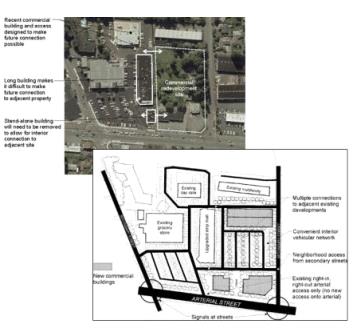
Figure 58. Vehicular circulation case study. The aerial photo to the left shows existing conditions around the development site. The site plan below shows how the site can be successfully configured to provide good vehicular access between the sites.
(c) Internal access roads should be designed to look and function more like streets, utilizing street trees and sidewalks (see WMC 21.33.230). Only parallel parking fronting directly on the access road is permitted.
Exception: Alternate internal access road design in the Downtown and Little Bear Creek Corridor (see Chapter 21.22 WMC) may be acceptable, subject to Director approval, such as woonerfs and other configurations that provide for attractive and safe pedestrian access as well as vehicle circulation.
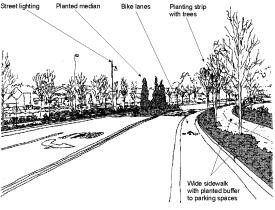
Figure 59. The roadway through Woodinville Town Center is a good example of an interior access road designed to look and function more like a street.
(Ord. 737 § 2 (Att. A), 2022)
21.33.300 Vehicle entrances.
(1) Intent.
(a) To provide safe, convenient access to commercial sites without diminishing quality pedestrian walking or visual experiences; and
(b) To enhance the safety and function of public streets.
(2) Design Principle. Minimize driveway impacts across pedestrian walks. Implementing measures are listed below. For properties within the Downtown and Little Bear Creek Corridor (see Chapter 21.22 WMC) also see Table 21.33.110(1) for driveway standards specific to each street.
(a) Parking lot entrances, driveways, and other vehicle access routes onto private property from a street may be restricted to no more than one entrance lane and one exit lane per 300 linear feet of property as measured horizontally along the street face.
(b) Properties with less than 300 linear feet of street frontage shall make a genuine effort to negotiate shared access with adjoining property owners. One entry and one exit lane for vehicle access will be allowed after there is demonstrable evidence, acceptable to the Director, that shared access is not feasible.
(c) Vehicular access to corner lots shall be located on the lowest classified roadway and as close as practical to the property line most distant from the intersection.
Exception: Corner lots not on a pedestrian-oriented street may have one entrance per street provided the owner provides evidence acceptable to the Director that they are unable to arrange joint access with an abutting property.
(d) Parking garage entries should not dominate the streetscape. They should be designed and sited to complement, not subordinate, the pedestrian entry. This applies to both public garages and any individual private garages, whether they front on a street or private interior access road. For example, townhouse developments are encouraged to employ tandem garages in conjunction with other architectural and landscaping features to deemphasize the garage on building facades. Alleys used primarily for vehicular access, where the primary pedestrian entry is off of another street, interior access road, or pathway, are exempt from this standard.
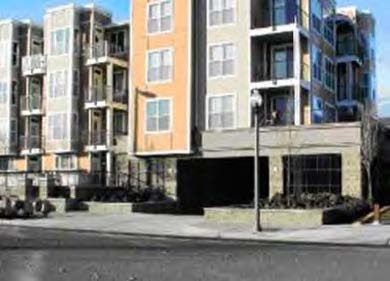
Figure 60. A good example of a parking garage entry that does not dominate the streetscape.
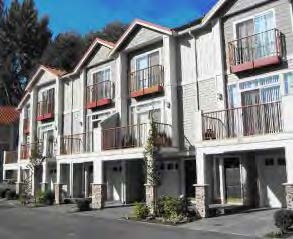
Figure 61. The garages of these townhouse units are deemphasized through the use of overhanging balconies, landscaping, building materials and color. The tandem parking configuration of the garages also limits their visibility.
(Ord. 737 § 2 (Att. A), 2022)
21.33.310 Building design – Character.
(1) Intent.
(a) To encourage building design that reflects the Northwest woodland character.
(b) To encourage building design that has visual character and creates comfortable human environments.
(c) To incorporate design treatments that reduce the scale of large buildings.
(d) To encourage building design that is authentic and responsive to site conditions.
(2) Design Principle. Northwest woodland character refers to structures designed in the context of the Northwest’s natural setting, which includes climate, topography, ecosystems, and evolved social organization.
(a) The general form of structures is to be simple, three-dimensional forms. Specifically, structures shall have building forms that express wood framing, have traditional Northwest woodland exterior finishes, and may use exposed, heavy wood timber structural members.
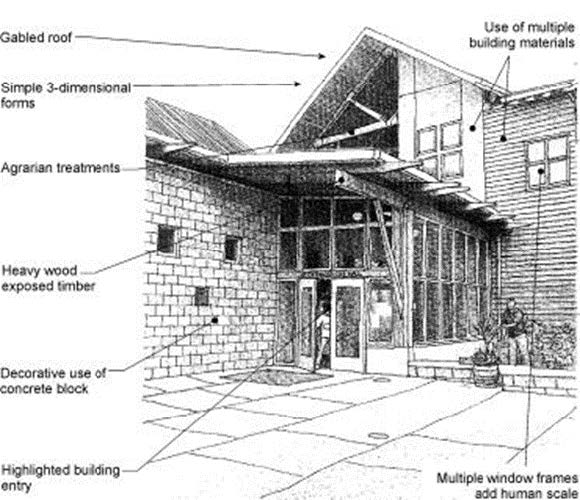
Figure 62. Woodinville City Hall is an example of traditional Northwest woodland character.
(b) Structures with multiple component forms are to be integrated for visual unity.
(c) Those components that support and/or stabilize structures should be visually exposed when compatible with design.
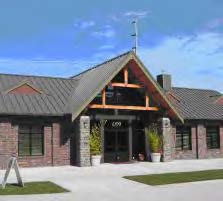
Figure 63. The simple three-dimensional forms, exposed timber elements, and proportional arrangement of windows and doors make this building a good example of Northwest woodland character.
(3) Design Principle. Exterior finishes are to be compatible with Northwest woodland character. Specifically:
(a) Material finishes shall reflect the early 1900s domestic agrarian vernacular of materials. All siding materials should be complemented with wood elements.
(b) Multistory buildings in the Downtown and Little Bear Creek Corridor (see Chapter 21.22 WMC) may incorporate high quality materials besides those reflecting 19th century agrarian architecture, including brick and other architecturally treated masonry, extensive use of glazing, and high quality panel systems.
(c) Exterior finish colors should be neutral shades of natural colors found in Northwest woodlands or colors typical of historic agrarian structures of the Northwest and may include limited use of compatible accent colors.
(d) The arrangement, proportion, and design of windows and doors (fenestration) shall conform with the following implementing measures:
(i) The height-to-width ratio of opening and group openings are to be proportionately scaled to the wall;
(ii) Door and window details and trim that are suitably scaled to the wall; and
(iii) Developments are encouraged to reduce large expanses of glass used in windows and doors to smaller component windows reminiscent of early 1900s domestic agrarian structures when adjoining to sidewalks or other pedestrian accommodations.
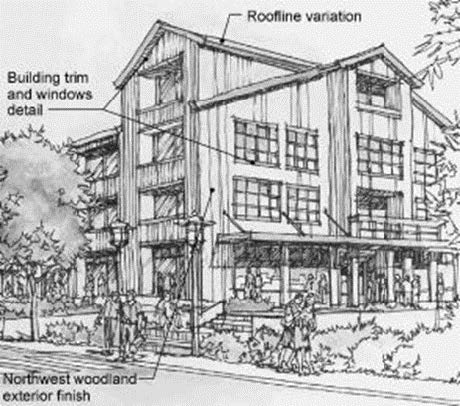
Figure 64. The arrangement, proportion, and design of windows and doors are suitable to the walls on this building.
(4) Design Principle. Franchise and corporate architecture shall not be allowed in the Downtown and Little Bear Creek Corridor (see Chapter 21.22 WMC). The use of stock building plans, typical corporate and/or franchise designs, “regional prototype alternatives,” or other designs which are easily identified with a particular chain or corporation are not allowed, except for signs allowed pursuant to Chapter 21.44 WMC. Besides diluting the City’s identity with corporate (and therefore generic) identities, these buildings are undesirable, because they are not adaptable to other uses when the corporation franchises leave.
Figure 65. Generic franchise and corporate architecture are not allowed in the Downtown and Little Bear Creek Corridor (see Chapter 21.22 WMC).
(Ord. 737 § 2 (Att. A), 2022)
21.33.320 Human scale.
(1) Intent.
(a) To encourage the use of building components that relate to the size of the human body.
(b) To add visual interest to buildings.
(2) Design Principle. Incorporate human scale building elements into new developments. Specifically:
(a) Buildings must employ elements or techniques described in subsection (2)(b) of this section to achieve “human scale.” Specifically:
(i) Buildings less than 14 feet in height and less than 10,000 square feet of gross floor area must incorporate at least three human scale measures;
(ii) Buildings between 14 feet and 35 feet in height or buildings less than 14 feet in height but with more than 10,000 square feet in gross floor area must incorporate at least four human scale measures;
(iii) Buildings 35 feet or taller must incorporate at least five human scale measures; or
(iv) For large buildings with more than 40,000 square feet of gross floor area, the Director may require additional human scale measures to meet the intent of this section.
(b) Human Scale Measures.
(i) Balconies or decks in upper stories, at least one balcony or deck per upper floor on the facades facing streets, provided they are integrated into the architecture of the building. (Balconies that are merely tacked onto the outer wall of the buildings or “cave balconies” that do not project from the outer wall of the building are not “integrated” into the architecture.) Balconies are encouraged to be at least six feet deep and six feet wide;
(ii) Bay windows or other window treatments that extend out from the building face;
(iii) At least 150 square feet of pedestrian-oriented space for each 100 lineal feet of building facade;
(iv) First-floor individual windows, generally less than 32 square feet per pane and separated from the windows by at least a six-inch molding;
(v) Gable or hipped roof; provided, that the hipped or gable roof covers at least one-half of the building’s footprint and has a slope greater than or equal to three feet vertical in 12 feet horizontal. Use gabled forms at corners, entries, wall modulation points, etc., to adapt large structures to the character described in WMC 21.33.310;
(vi) A porch or covered entry;
(vii) Spatially defining building elements, such as a trellis, overhang, canopy, or other element, that defines space that can be occupied by people;
(viii) Upper story setbacks, provided one or more of the upper stories are set back from the face of the building at least six feet;
(ix) Composing smaller building elements near the entry of pedestrian-oriented street fronts of large buildings (see Figure 69);
(x) Landscaping components that meet the intent of the guidelines; and/or
(xi) The Director may consider other methods to provide human-scale elements not specifically listed here. The proposed methods must satisfy the intent of the design standards.
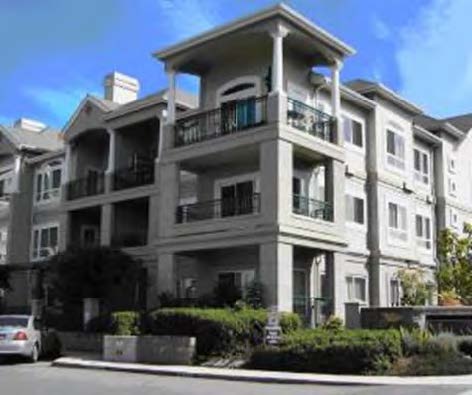
Figure 66. An example of balconies that have been integrated into the architecture of the building.
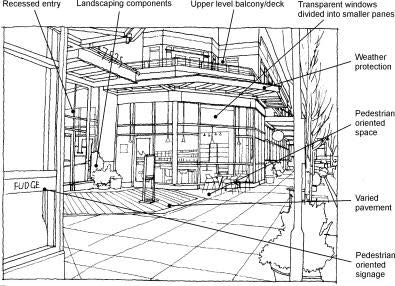
Figure 67. Illustrating a variety of human scale components on a building.
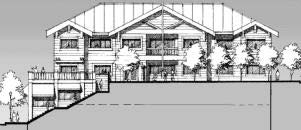
Figure 68. This building uses upper-level balconies, an upper story setback, and gabled roof forms to meet human scale guidelines.
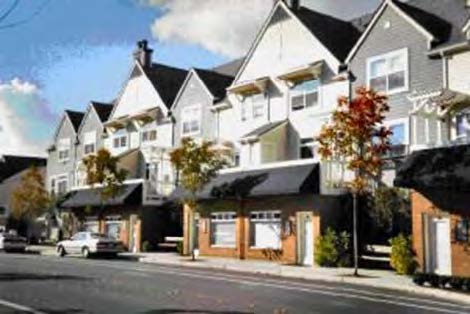
Figure 69. This mixed-use building incorporates decks, upper-level setbacks, trellises, and gabled roof forms to meet human scale guidelines.
Figures 70. Examples of composing smaller building elements near the entry of large buildings.
(Ord. 737 § 2 (Att. A), 2022)
21.33.330 Architectural scale.
(1) Intent.
(a) To encourage architectural scale of development that is compatible with nearby commercial areas that have the character of agrarian structures.
(b) To add visual interest to buildings.
(2) Design Principle. Reduce scale of large buildings.
(a) All new buildings over three stories, or over 2,500 square feet in gross building footprint, shall provide at least three modulations and/or articulation features as described below along any facade that is visible from a street or pedestrian route, and have entries at intervals of no more than 50 feet:
(i) Horizontal Building Modulation. The depth of the modulation should be at least two feet when tied to a change in the roofline and at least six feet in other situations. Balconies may be used to qualify for this option, provided they have a floor area of at least 40 square feet, are integrated with the architecture of the building, and project at least two feet from the building facade and are tied to a change in the roofline.
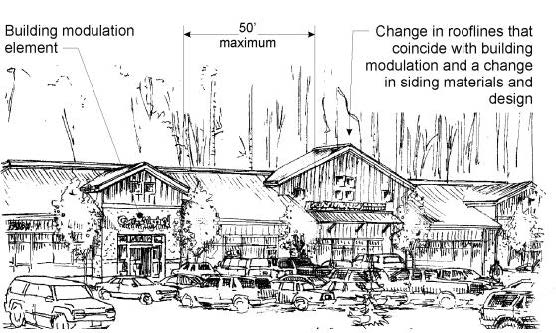
Figure 71. Building modulation example.
(ii) Modulated Roofline. Buildings may qualify for this option by modulating the roofline of all facades visible from a street, park, or pedestrian pathway per the following standards:
(A) For flat roofs or facades with a horizontal wave, fascia, or parapet, change the roofline so that no unmodulated segment of roof exceeds 50 feet. Minimum vertical dimension of roofline modulation is the greater of two feet or 0.10 multiplied by the wall height (finish grade to top of wall);
(B) For gable, hipped, or shed roofs, a slope of at least three feet vertical to 12 feet horizontal; or
(C) Other roof forms such as arched, vaulted, dormer, or sawtoothed may satisfy this design standard if the individual segments of the roof with no change in slope or discontinuity are less than 50 feet in width (measured horizontally).
(iii) Repeating distinctive window patterns at intervals less than the articulation interval.
(iv) Providing a porch, patio, deck, or covered entry for each articulation interval.
(v) Changing the roofline by alternating dormers, stepped roofs, gables, or other roof elements to reinforce the modulation or articulation interval.
(vi) Changing materials with a change in building plane.
(vii) Providing lighting fixtures, trellises, trees, or other landscape features within each interval.
(viii) For mixed-use buildings with pedestrian-oriented facades, the following may also be used as articulation features:
(A) Use of separate weather protection features that reinforce the pattern of small storefront spaces.
(B) Use of vertical piers. Such piers must project at least two inches from the facade and extend from the ground floor to the cornice or roofline.
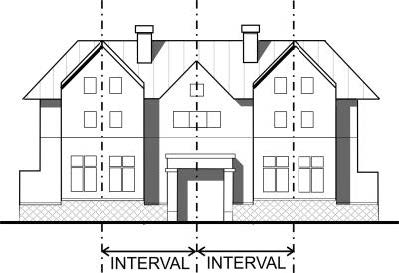
Figure 72. Building articulation.
(ix) Other design treatments that satisfy the intent of the design standards as determined by the Director.
Note that the Director may increase or decrease the 50-foot interval for modulation and articulation to better match surrounding structures or to implement an adopted subarea plan, where applicable.
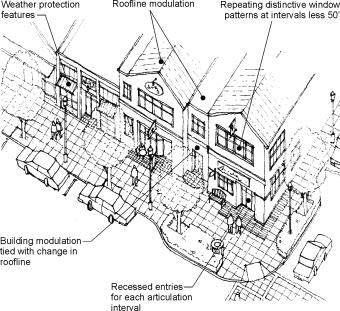
Figure 73. These buildings illustrate a combination of horizontal building modulation, roofline modulation, and building articulation to reduce the architectural scale and provide visual interest.
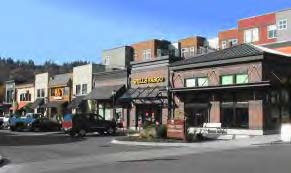
Figure 74. This Kirkland development uses a variety of roof forms and heights, different weather protection features, changing building materials and colors, and a modest amount of horizontal building modulation to reduce the overall architectural scale.
(b) The maximum facade width (the facade includes the apparent width of the structure facing the street and includes required modulation) of multistory buildings visible from a street, public open space, or pedestrian-oriented space is 120 feet. Buildings exceeding 120 feet in width along the street front shall be divided by a 30-foot-wide modulation of the exterior wall, so that the maximum length of a particular facade is 120 feet. Such modulation must be at least 20 feet or deeper and extend through all floors (the first floor will be exempted if it includes a pedestrian-oriented facade). Decks and roof overhangs may encroach up to three feet (per side) into the modulation. The Director will consider other design methods that are effective at reducing the perceived width of the building.
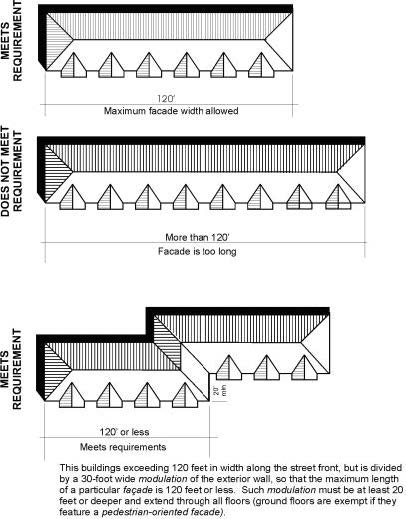
Figure 75. Illustrating maximum facade widths.
(Ord. 737 § 2 (Att. A), 2022)
21.33.340 Building corners.
(1) Intent. To create visual interest and increased activity at public street corners.
(2) Design Principle. Architecturally accentuate building corners at street intersections. All new buildings located within 15 feet of a property line, at the intersection of streets, public or private, are required to employ two or more of the following design elements or treatments to the building corner facing the intersection:
(a) Provide at least 100 square feet of pedestrian-oriented space between the street corner and the building(s). To qualify for this option, the building(s) must have direct access to the space;
(b) Provide a corner entrance to courtyard, building lobby, atrium, or pedestrian pathway;
(c) Include a corner architectural element such as:
(i) Bay window or turret;
(ii) Roof deck or balconies on upper stories;
(iii) Building core setback “notch” or curved facade surfaces; or
(iv) Sculpture or artwork, either bas-relief, figurative, or distinctive use of materials;
(d) Special treatment of the pedestrian weather protection canopy at the corner of the building; and/or
(e) Other similar treatment or element approved by the Director.
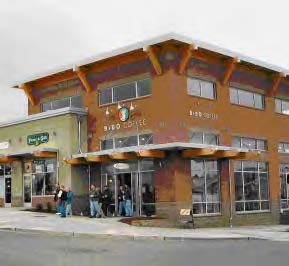
Figure 76. The second-story component, change in building materials, horizontal modulation, and unique roof form make an architectural statement on this street corner.
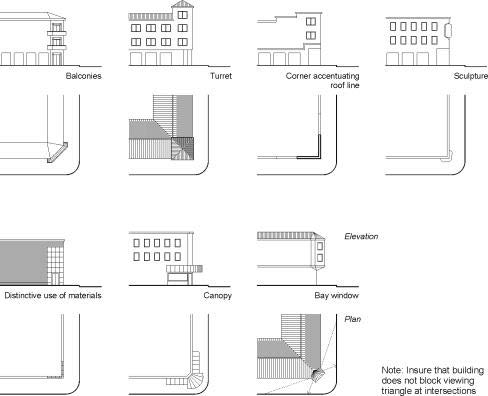
Figure 77. Corner building treatments.
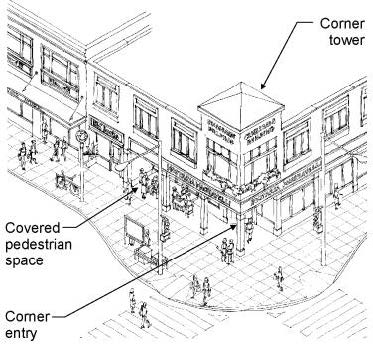
Figure 78. Corner building example.
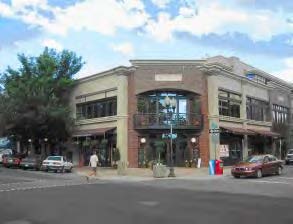
Figure 79. To emphasize its street corner location, this building uses a cropped corner, change in building materials, decorative facade elements, and a modulated roofline.
(Ord. 737 § 2 (Att. A), 2022)
21.33.350 Building details.
(1) Intent.
(a) To ensure that buildings have design integrity at all observable distances;
(b) To enhance the character and identity of Woodinville’s commercial areas;
(c) To enhance the pedestrian environment; and
(d) To encourage creativity in the design of storefronts.
(2) Design Principle. Enhance buildings with appropriate design details. When buildings are seen from a distance, the most noticeable qualities are the overall form and color. A three-story commercial building that is 100 feet wide and 35 feet tall must be observed at least 200 feet away in order for the building to fit within a person’s cone of vision so its overall shape can be perceived. At that distance, windows, doors, and other major features are clearly visible. However, within 60 to 80 feet from the building (approximately the distance across a typical downtown street), a person notices not so much the building’s overall form as its individual elements. When closer, the most important aspects of a building are its design details, texture of materials, quality of its finishes, and small, decorative elements. In a pedestrian-oriented business area, it is essential that buildings and their contents be attractive up close. Therefore, these design standards include implementing measures which require all buildings to incorporate design details and small-scale elements into their facades.
(a) All new buildings and individual storefronts shall include on the facades that face a street, park, or pedestrian route at least four of the following design features:
(i) Decorative rooflines, such as an ornamental molding, entablature, frieze, or other roofline device visible from the ground level. If the roofline decoration is in the form of a linear molding or board, then the molding or board must be at least eight inches wide;
(ii) Decorative treatment of windows and doors, such as decorative molding/framing details around all ground-floor windows and doors, decorative glazing, or door designs;
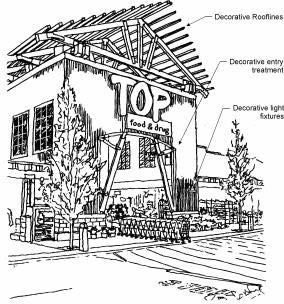
Figure 80. A variety of details add visual interest to this building.
(iii) Decorative light fixtures with a diffuse visible light source, such as a globe or “acorn” that is nonglaring, or a decorative shade or mounting;
(iv) Decorative building materials, including one of the following:
(A) Decorative masonry, shingle, brick, or stone;
(B) Individualized patterns or continuous wood details, such as fancy butt shingles (a shingle with the butt end machined in some pattern, typically to form geometric designs), decorative moldings, brackets, wave trim or lattice work, ceramic tile, stone, glass block, Carrera glass, or similar materials; or
(C) Other materials with decorative or textural qualities as approved by the Director.
(v) A planting strip at least 16 inches wide between an adjacent pathway and the building facade;
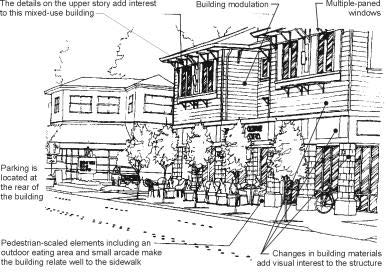
Figure 81. The use of different building materials, window treatments, and roofline brackets adds to the visual interest of this building.
(vi) Decorative railings, grill work, or landscape guards;
(vii) Landscaped trellises;
(viii) Decorative paving or artwork, which may be freestanding or attached to the building, and may be in the form of mosaic mural, bas-relief sculpture, light sculpture, water sculpture, fountain, freestanding sculpture, art in pavement, or similar artwork. Painted murals or graphics on signs or awnings do not qualify. All artwork used to satisfy this condition is subject to approval by the Director; or
(ix) Other similar features or treatment that satisfies the intent of the design standards as approved by the Director.
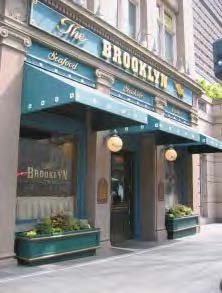
Figure 82. The building provides a number of details that enhance the pedestrian environment, including decorative lighting, planter boxes, decorative awnings, historical plaques, and decorative facade elements.
(b) All new buildings must note the year of construction of a building by the installation of a plaque attached to the building. Stone or masonry set integrally with other masonry on the front building elevation facing the principal street may be used in lieu of a plaque. The year of construction is to be noted by numbers not less than six inches high. Other information associated with the building that may have historic interest in the future may be included in addition to the year of construction.
(c) Building facades on a building’s front (facades containing a public building entrance), when located adjoining to a pedestrian pathway must contain the following elements:
(i) A pedestrian-oriented facade pursuant to WMC 21.33.110(2)(b);
(ii) Exceptions will be considered by the Director that meet the intent of the standards. For example, the Director may allow reduced weather protection elements on north-facing facades to allow more daylight into buildings. Reduced window transparency may be allowed in exchange for other desirable pedestrian amenities or building elements (see Figure 83).
Also see WMC 21.33.250(2)(f), internal pedestrian paths and circulation, for related standards and illustrations.
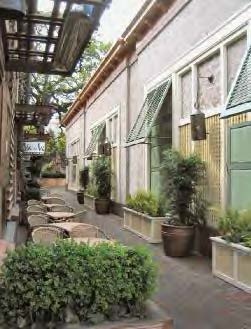
Figure 83. While the treatment of this facade would not meet the definition of a “pedestrian-oriented facade,” the wall’s combination of design details successfully adds visual interest to the space. Weather protection features would not be required in this case since this is not the building’s primary facade (containing public building entry).
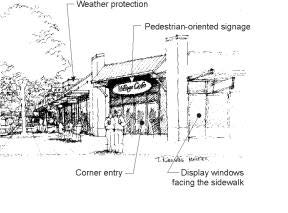
Figure 84. An example of a pedestrian-oriented facade.
(Ord. 737 § 2 (Att. A), 2022)
21.33.360 Materials.
(1) Intent. To encourage the use of a variety of high-quality compatible materials that will upgrade the visual image of commercial areas of Woodinville.
(2) Design Principles.
(a) Property owners are encouraged to retain existing vernacular facades that reflect the heritage of the City. Facades of vintage buildings may be adapted to contemporary use with the compatible materials, provided they meet the design standards herein.
(b) Buildings shall employ materials that reflect the City’s Northwest woodland character, such as:
(i) Wood (as used in agrarian structures);
(ii) Masonry;
(iii) Stone;
(iv) Shake roofs; or
(v) Other materials subject to approval by the Director.
Use of metal screening, plastic, plywood, sheet wood products, or fiberglass to cover over existing facades is discouraged. Wood should not be used to cover existing brick or cast stone masonry.
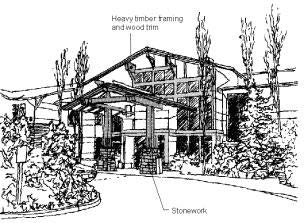
Figure 85. Use compatible building materials that reflect the City’s Northwest woodland character.
(3) Materials requiring special detailing when visible from a street, pedestrian pathway, or park:
(a) Concrete Block Walls. Concrete block construction must be architecturally treated in one or more of the following ways:
(i) Use of textured blocks with surfaces such as split face or grooved;
(ii) Use of other masonry types, such as brick, glass block, or tile in conjunction with concrete blocks; and/or
(iii) Use of decorative coursing to break up blank wall areas.
Use matching colored mortar where color is an element of architectural treatment for any of the options above.
(b) Requirements for Exterior Insulation and Finish System (EIFS) and Similar Troweled Finishes.
(i) EIFS should be trimmed in wood or masonry and should be sheltered from extreme weather by roof overhangs or other methods;
(ii) EIFS may only be used in conjunction with other approved building materials. Generally, the use of EIFS for more than 50 percent of the building facade is discouraged; and
(iii) EIFS is prohibited within two vertical feet of the sidewalk or ground level.
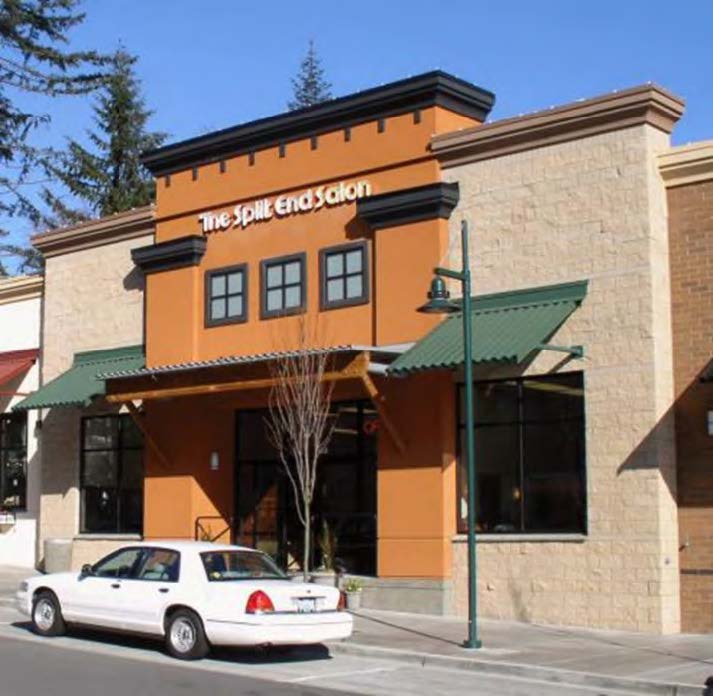
Figure 86. This storefront effectively combines EIFS and concrete block with wood trim and metal detailing.
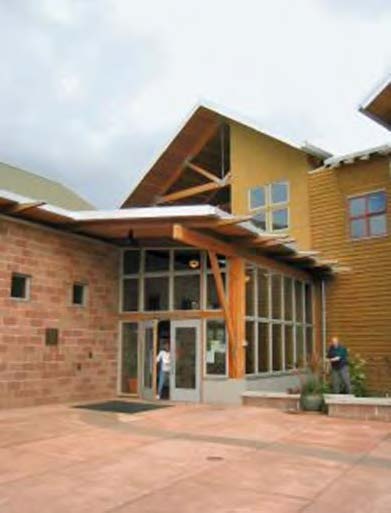
Figure 87. City Hall is a good example, combining EIFS, decorative concrete block, wood siding and trim work, glass, and metal roofing.
(c) Prohibited Materials.
(i) Mirrored glass;
(ii) Corrugated fiberglass;
(iii) Chainlink fencing (except for temporary purposes such as a construction site);
(iv) Crushed colored rock or tumbled glass;
(v) Metal siding. (Ord. 737 § 2 (Att. A), 2022)
21.33.370 Blank walls.
(1) Intent.
(a) To reduce the visual impact of large, undifferentiated walls.
(b) To reduce the apparent size of large walls through the use of various architectural and landscaping treatments.
(c) To enhance the character and identity of Woodinville’s commercial areas.
(d) To ensure that all visible sides of buildings provide visual interest.
(2) Design Principle. All blank walls (see definition in WMC 21.11A.030) within 50 feet of the street, pedestrian pathway, park, or adjoining lot, and visible from that street, pedestrian pathway, park, or adjoining lot, shall be treated with one or more of the following measures:
(a) Install a vertical trellis in front of the wall with climbing vines or plant materials. For large blank wall areas, the trellis must be used in conjunction with other treatments described below;
(b) Provide a landscaped planting bed at least eight feet wide or a raised planter bed at least two feet high and three feet wide in front of the wall. Plant materials that will obscure or screen at least 50 percent of the wall’s surface within four years are to be planted in the planting bed;
(c) Provide a landscaped bioretention swale or bioretention planter with plant materials that will obscure or screen at least 50 percent of the wall’s surface within four years of installation;
(d) Provide artwork (mosaic, mural, sculpture, relief, etc.) over at least 50 percent of the blank wall surface; and/or
(e) Other method as approved by the Director. For example, landscaping or other treatments may not be necessary on a wall that employs high-quality building materials (such as brick) and provides desirable visual interest. See Figure 90 for an example.
(f) Treatment of blank walls must be proportional to the wall.
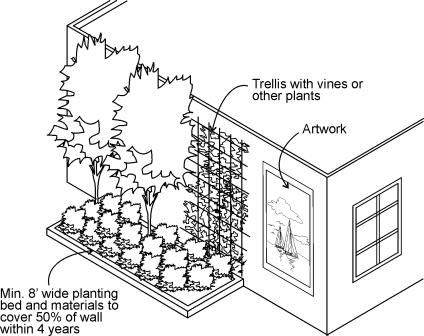
Figure 88. Blank wall treatments.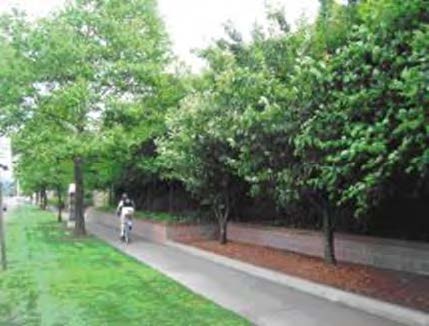
Figure 89. Terraced planting beds effectively screen a large blank wall.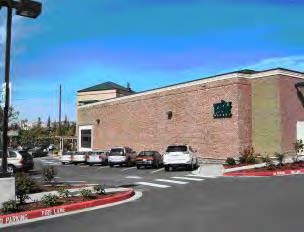
Figure 90. Special blank wall treatments may not be needed on the side of a building where high-quality brickwork is used.
(Ord. 737 § 2 (Att. A), 2022)
21.33.380 Northwest woodland character design standards illustrative guide.
(1) Amenities – Examples of Northwest Woodland Character.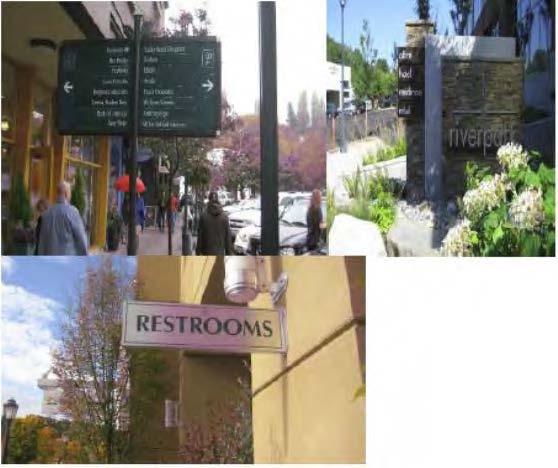
Figure 91. Way finding signage.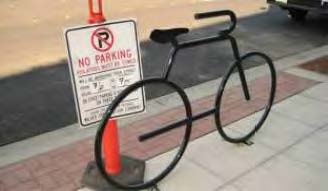
Figure 92. Bike rack.
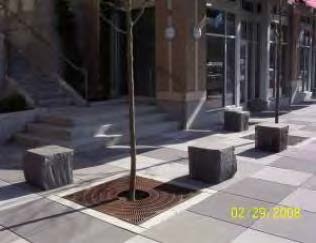
Figure 93. Unique street furniture with pavement color details – Building lighting on side of building.
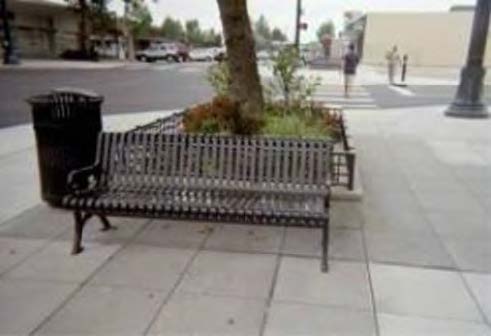
Figure 94. Bench with tree fence as well as waste receptacle.
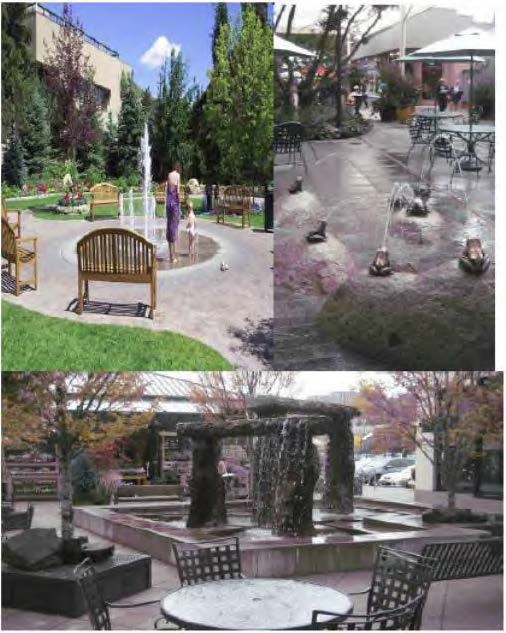
Figure 95. Fountains.
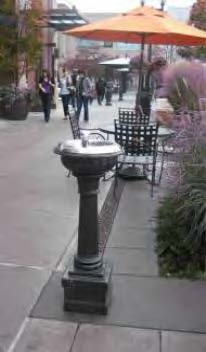
Figure 96. Drinking fountain.
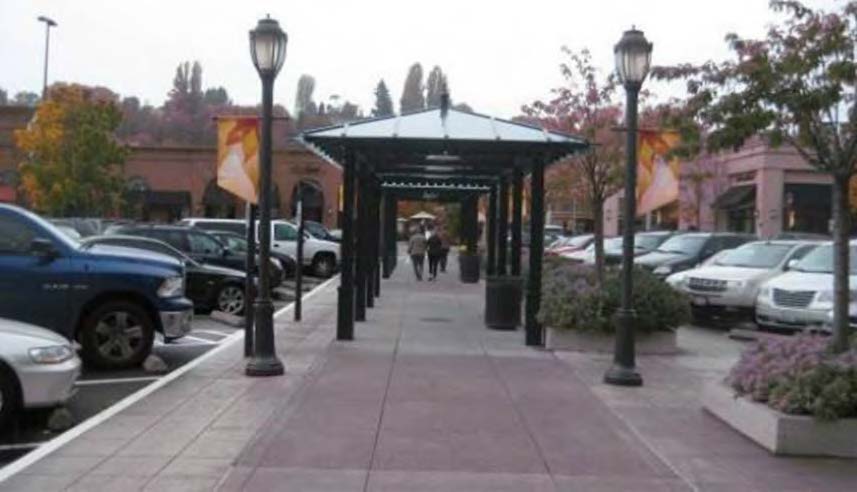
Figure 97. Pedestrian-scale lighting and rain protection (example of intermittent sheltering roof).
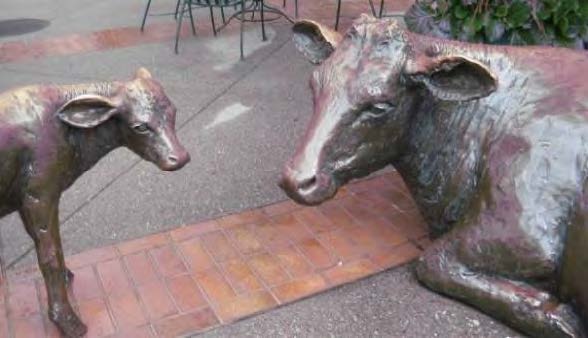
Figure 98. Public Art – Accessible.
(2) Colors – Examples of Northwest Woodland Character.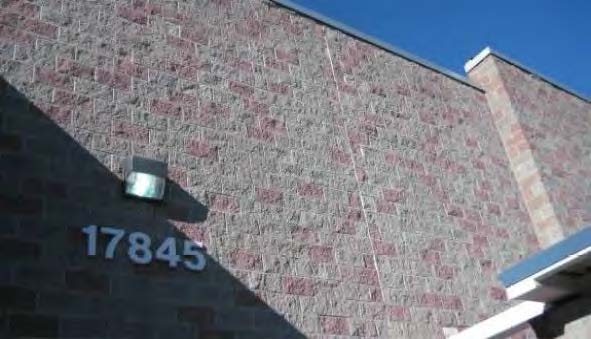
Figure 99. Colors – Use of color in quality aggregates.
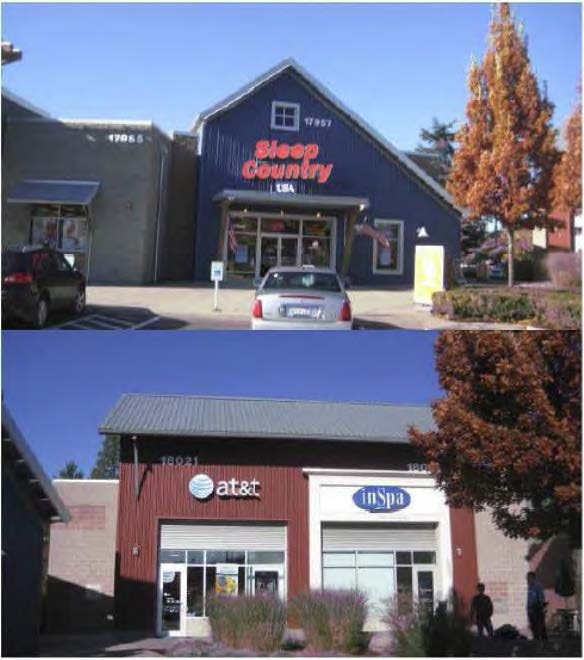
Figure 100. Use of color.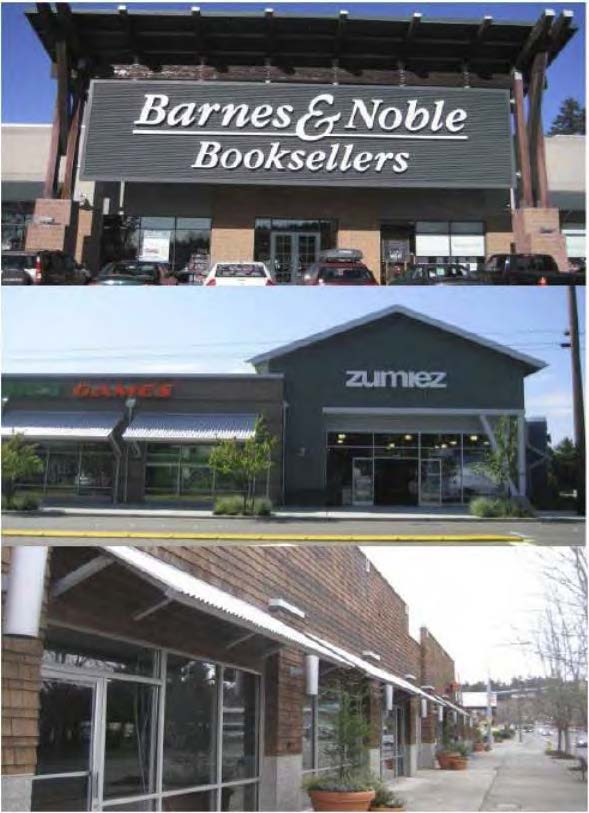
Figure 101. Examples of the use of color.
(3) Landscaping – Examples of Northwest Woodland Character.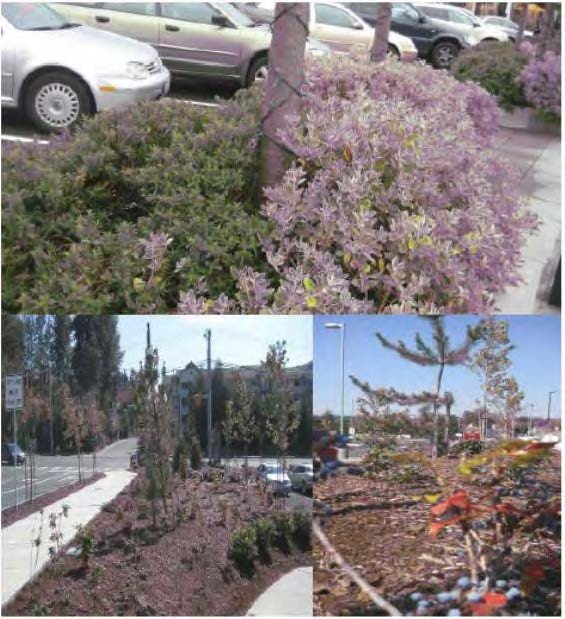
Figure 102. Robust landscaping using a variety of plantings.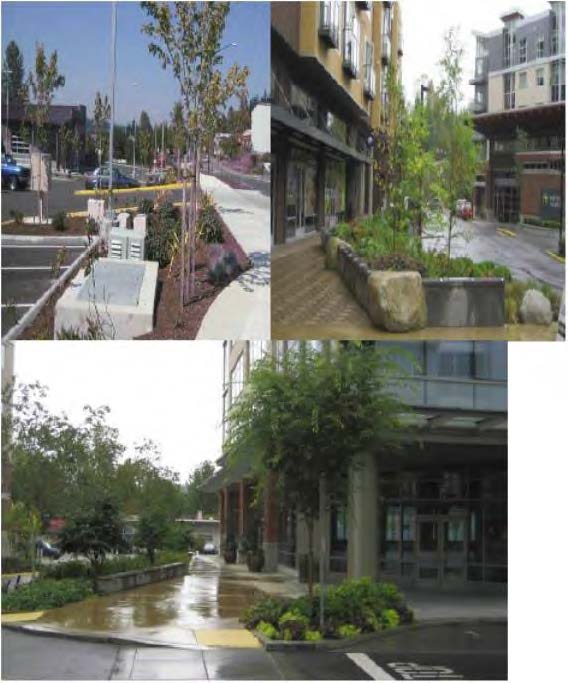
Figure 103. Landscaping examples.
(4) Materials – Examples of Northwest Woodland Character.
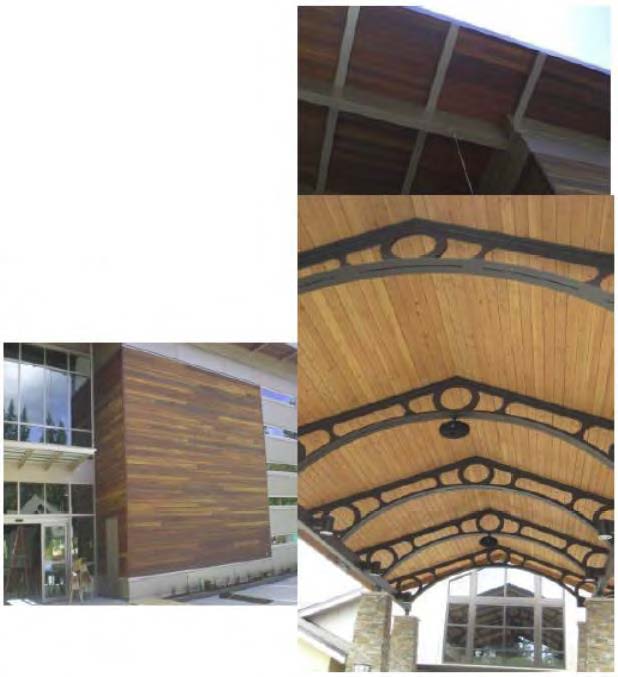
Figure 104. The elements incorporated into the eaves or protected entrance of the building.
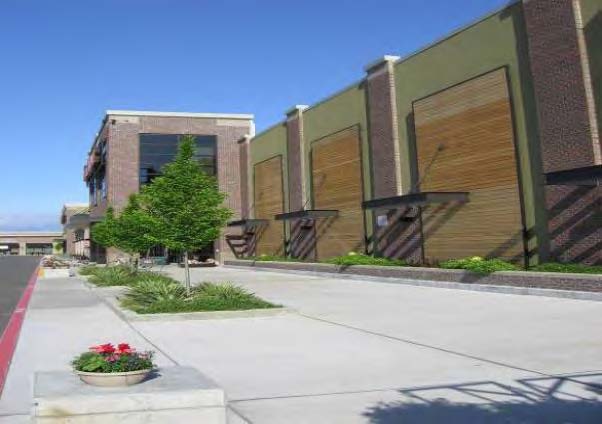
Figure 105. Wood materials incorporated into large format store.
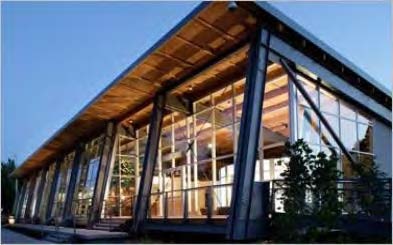
Figure 106. Wood and metal incorporated in a building.
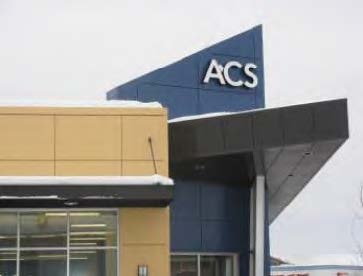
Figure 107. Metal materials incorporated into a building.
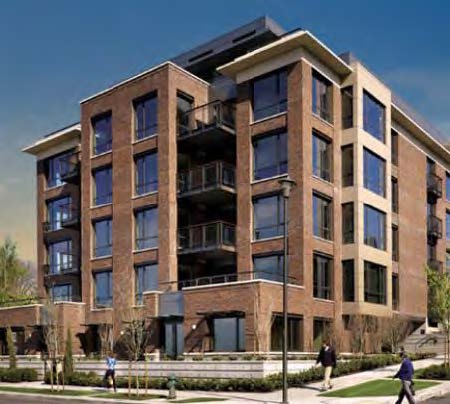
Figure 108. Brick and metal panels combination.
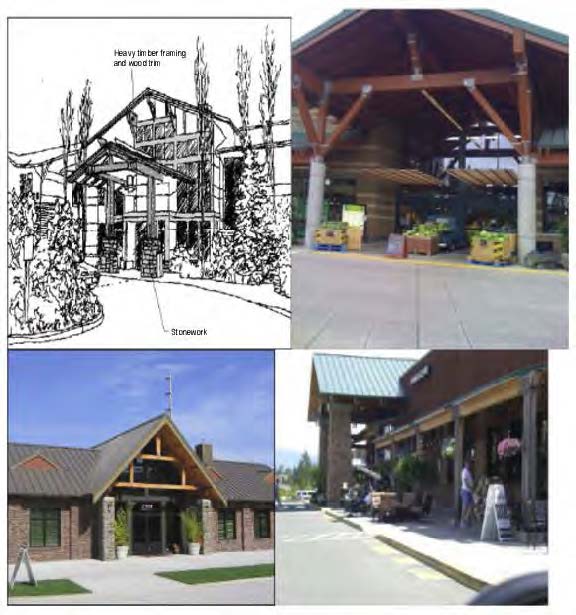
Figure 109. Wood accents at main entrances.
(5) Additional Building Forms – Larger Buildings.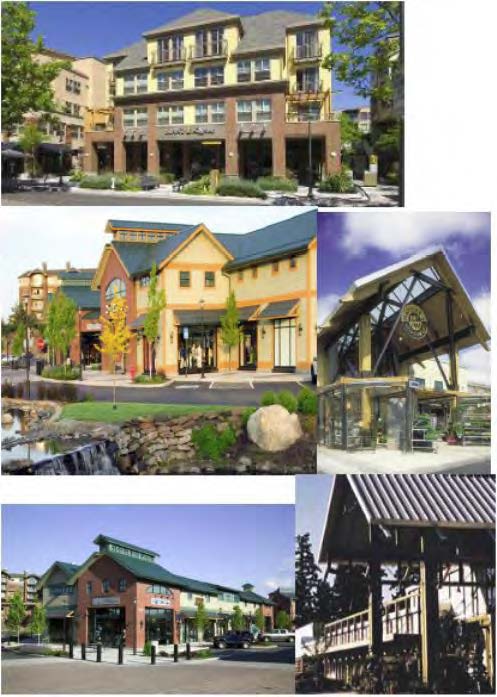
Figure 110. Form of the building using a variety of materials.
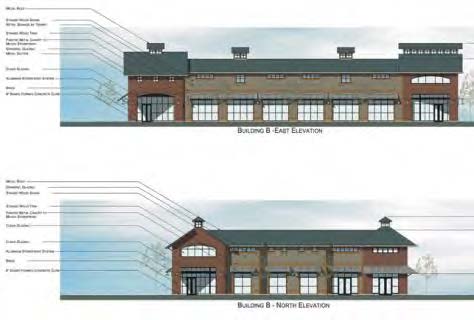
Figure 111. Agrarian building shapes.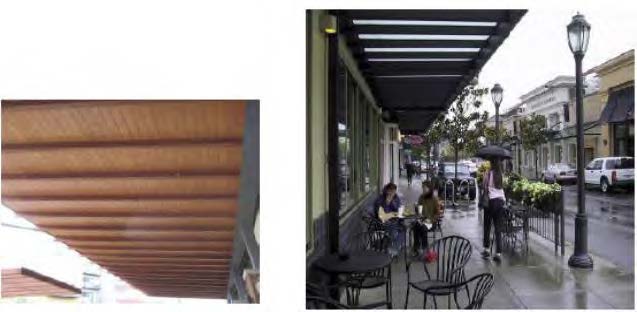
Figure 112 and 113. Examples of wide awnings that evoke Northwest woodland character.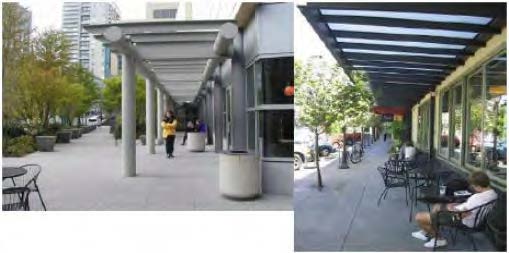
Figure 114. Example of awnings with sufficient width for seating and walking.
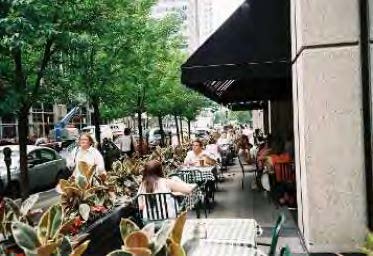
Figure 115. Example of adequately sized awning that helps activate the street.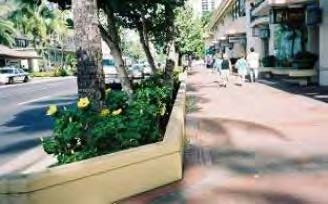
Figure 116. Site planning – Relationship to the street front – Example of an active street with defined pedestrian areas (walking and seating).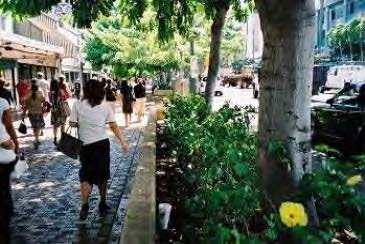
Figure 117. Examples of mature trees and landscaping in planters that provide good separation between pedestrians and moving traffic.
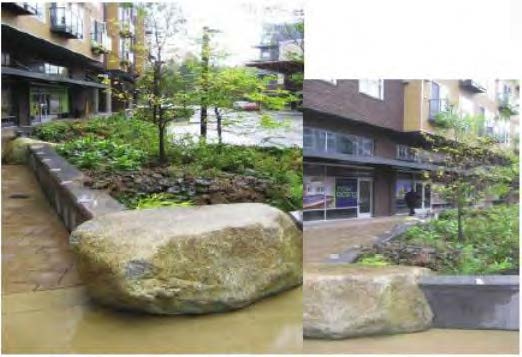
Figure 118. Examples demonstrating a mix of native and ornamental plants, small groves of trees, and the use of a stone for sitting.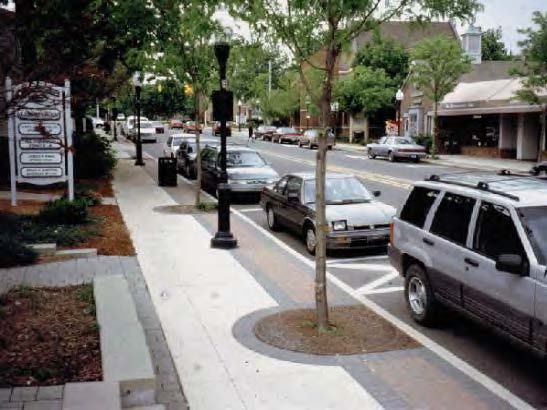
Figure 119. This decorative sidewalk pavement adds visual interest and character to the street. Where distinctive sidewalk patterns have been established, new development may be required to extend the pattern onto the project site.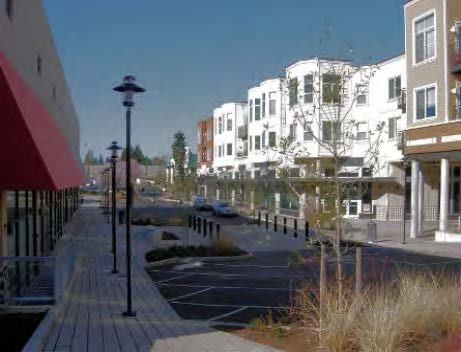
Figure 120. Example of street design that emphasizes the pedestrian.
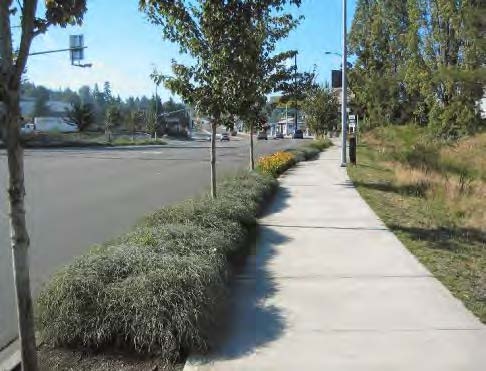
Figure 121. Planting strips are desirable along streets where there is no on-street parking.
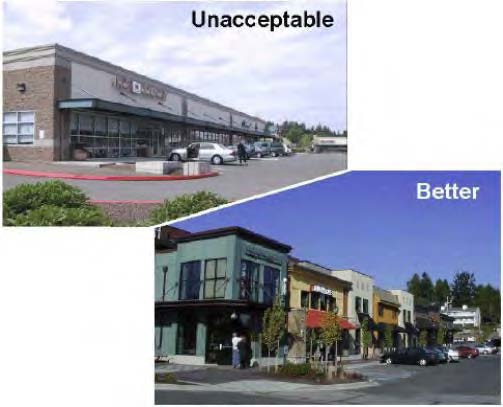
Figure 122. The continuous canopy on top is monotonous and de-emphasizes individual storefronts. The bottom example provides a variety of weather protection features and represents a more desirable example.
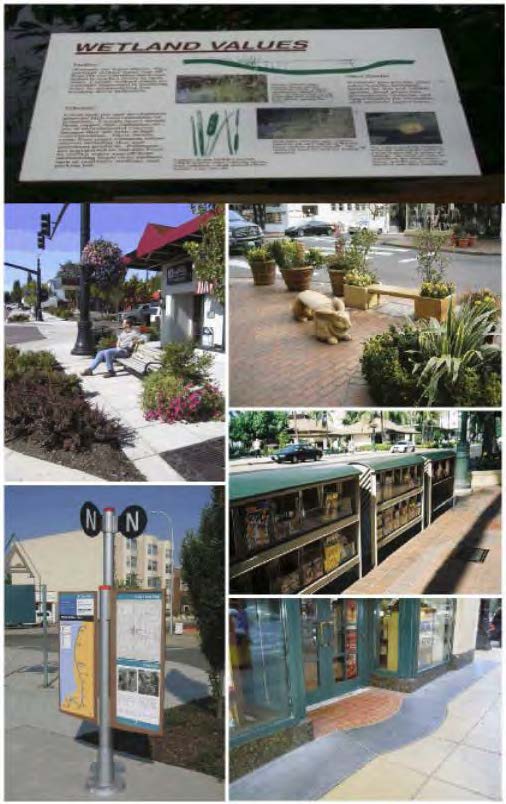
Figure 123. Examples of desired pedestrian amenities.
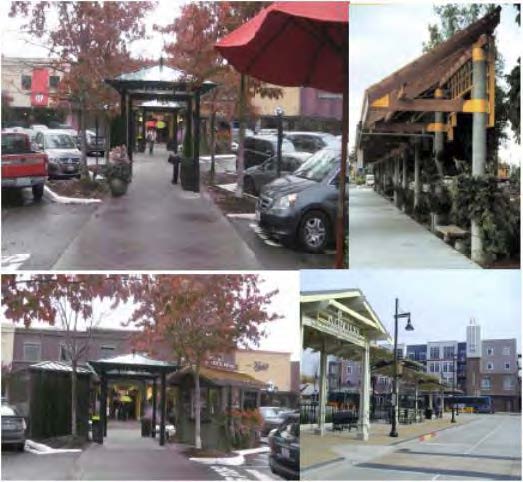
Figure 124. Examples of pedestrian weather protection.
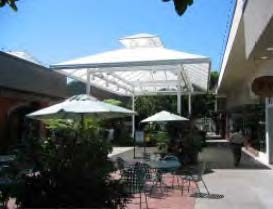
Figure 125. Examples of pedestrian shelters.
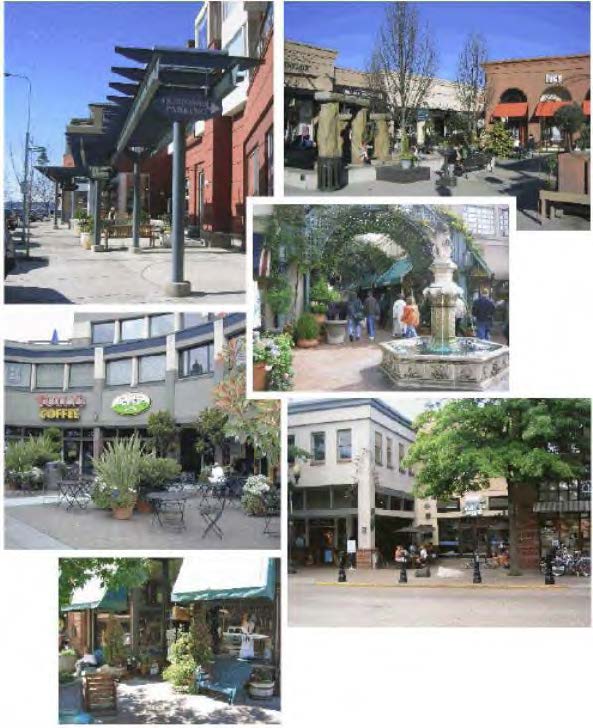
Figure 126. A variety of successful large and small pedestrian-oriented spaces.
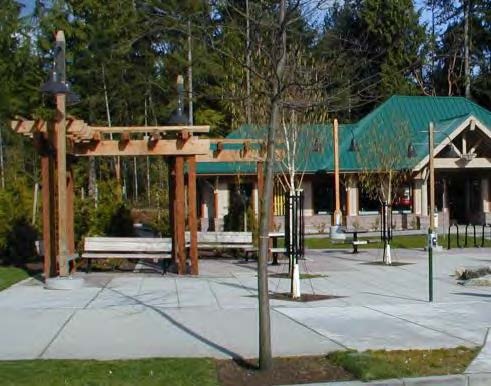
Figure 127. Good example of Northwest image including the retention of native evergreen trees.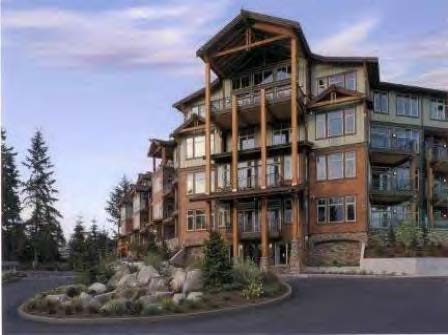
Figure 128. Example of Northwest woodland architecture and Northwest woodland landscaping using native trees, plants, and large native stone.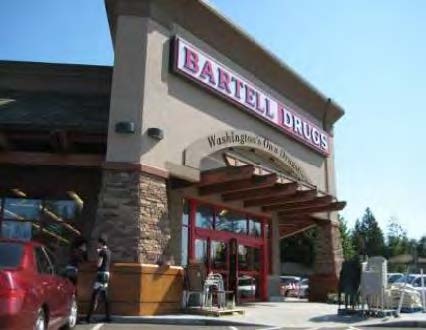
Figure 129. An example of a building that uses a variety of materials to evoke the Northwest woodland character.
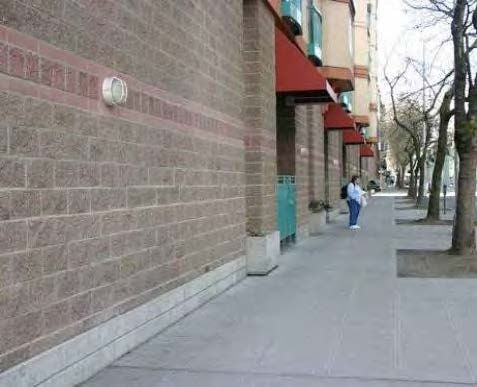
Figure 130. Unacceptable blank wall.
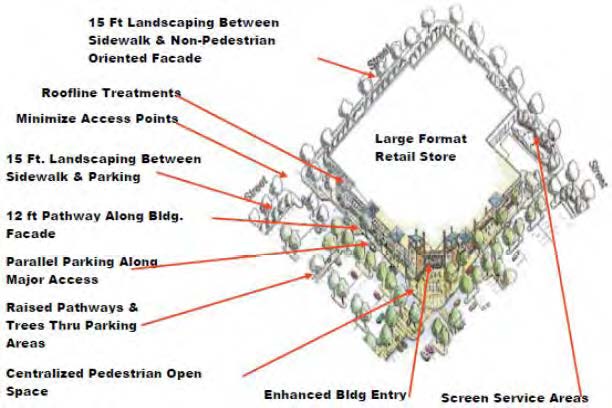
Figure 131. Large format retail store design standards.
(Ord. 737 § 2 (Att. A), 2022)



